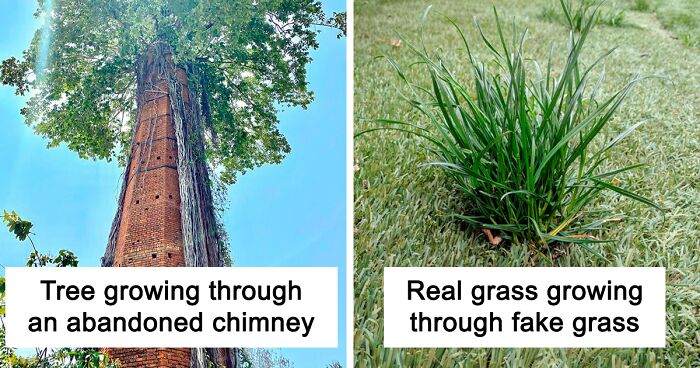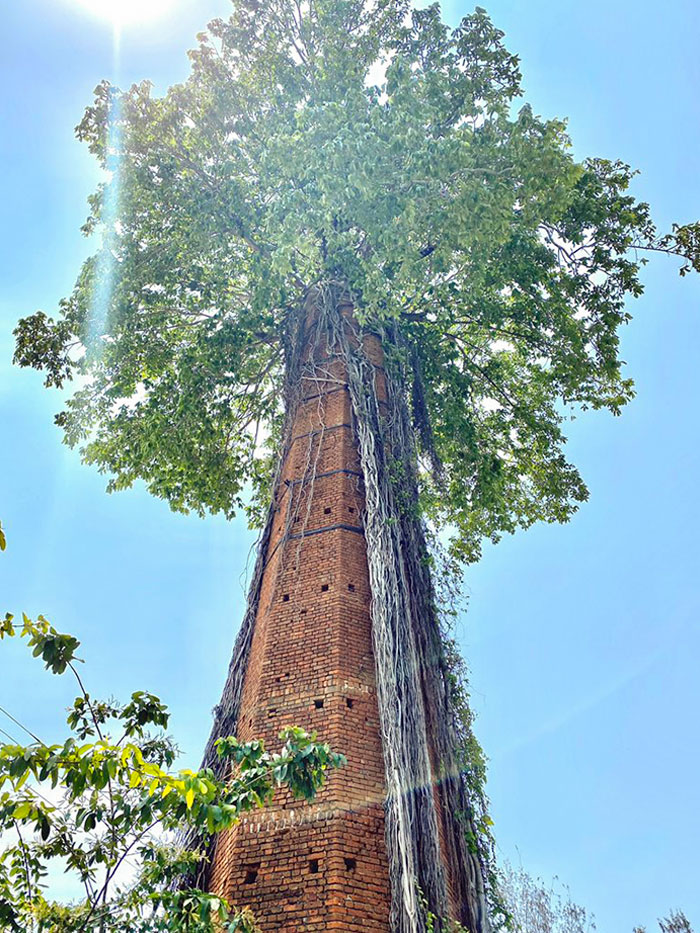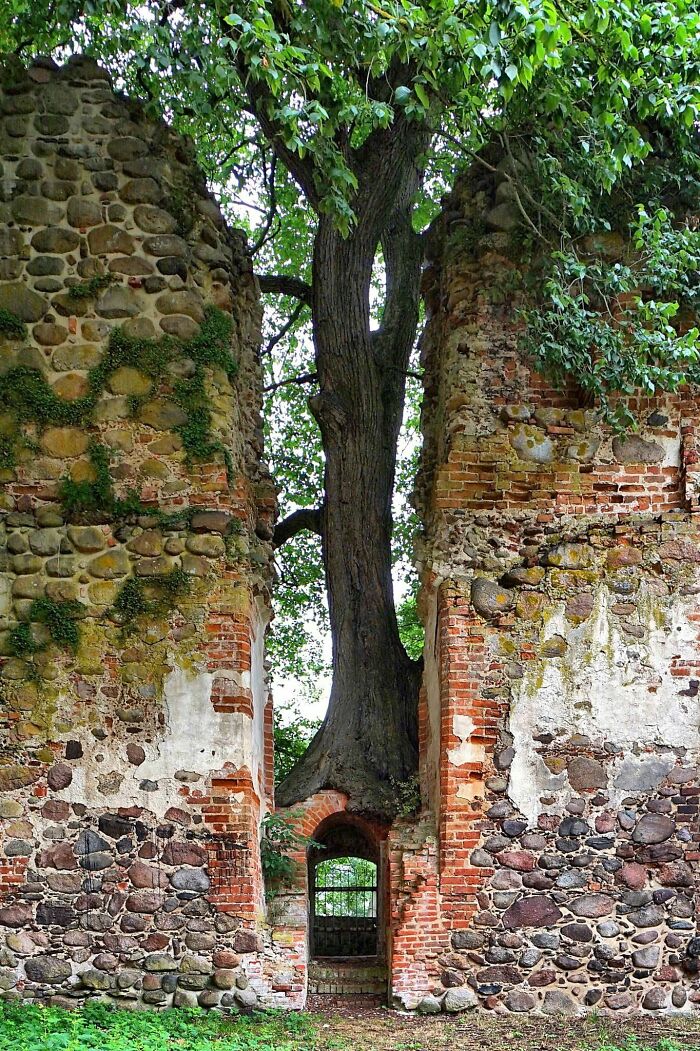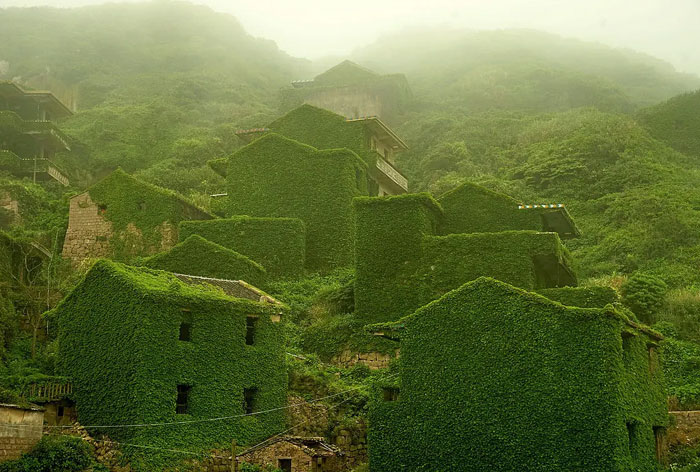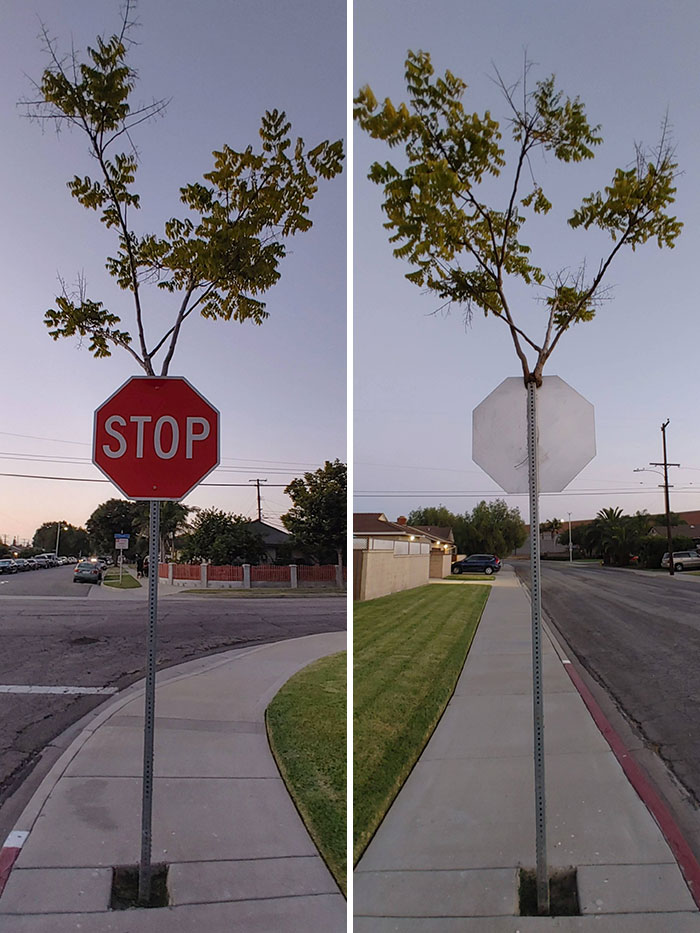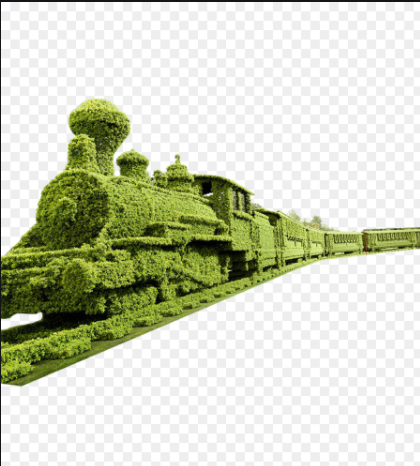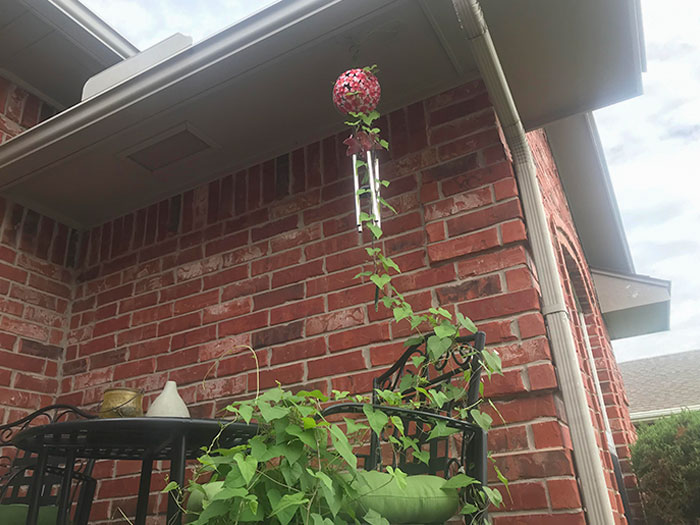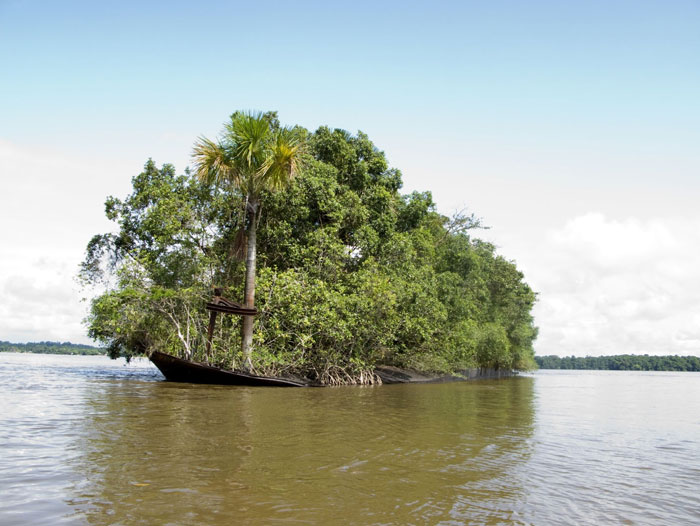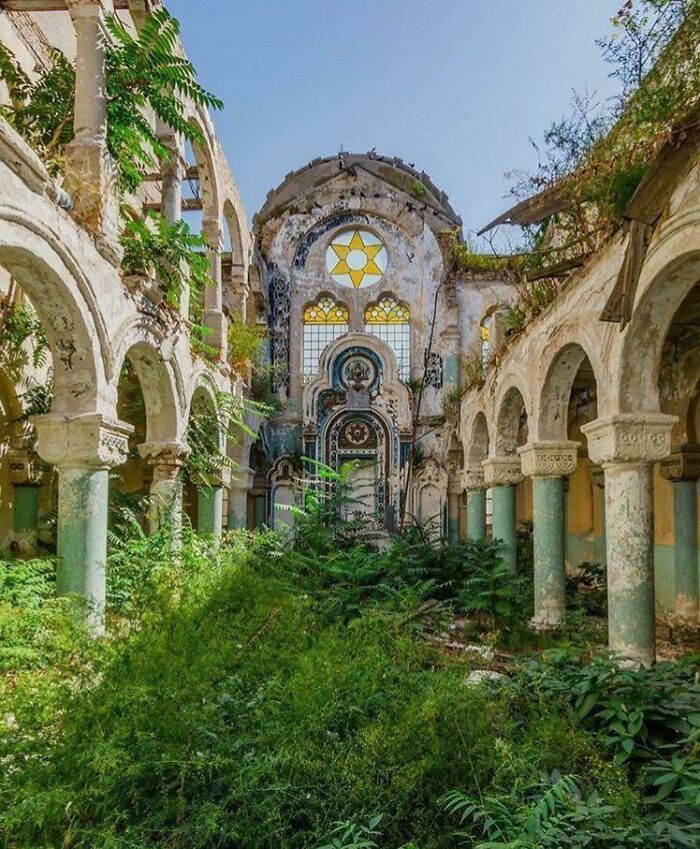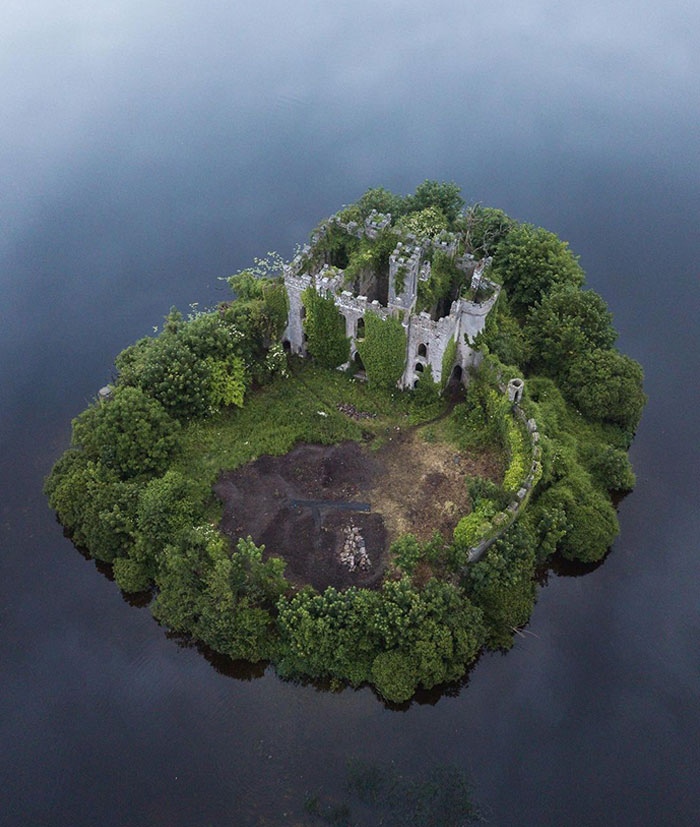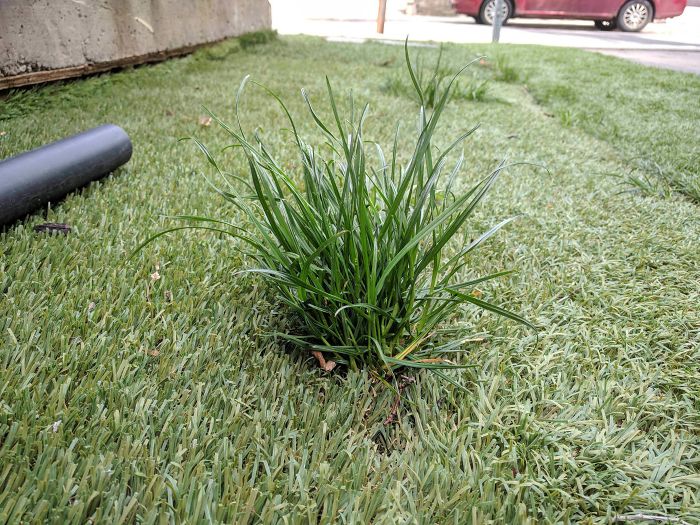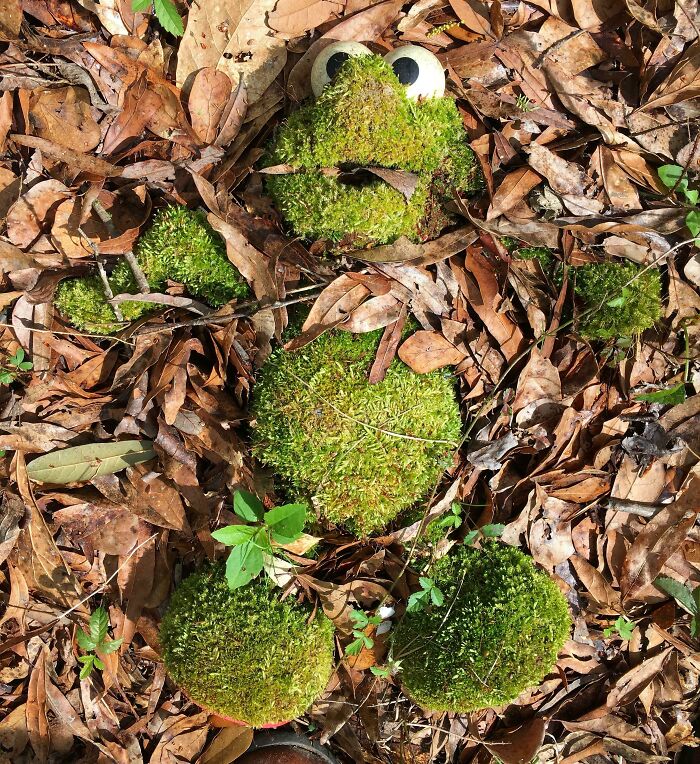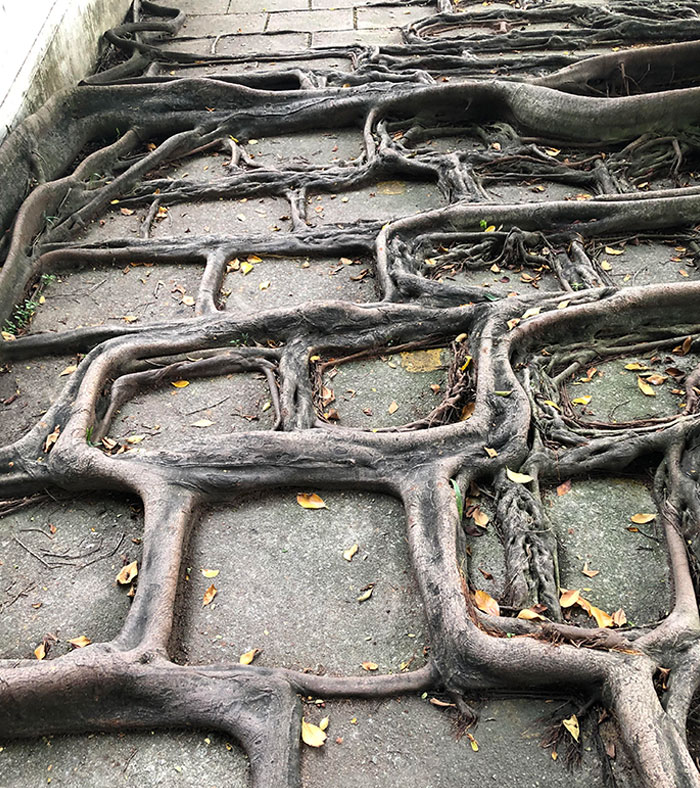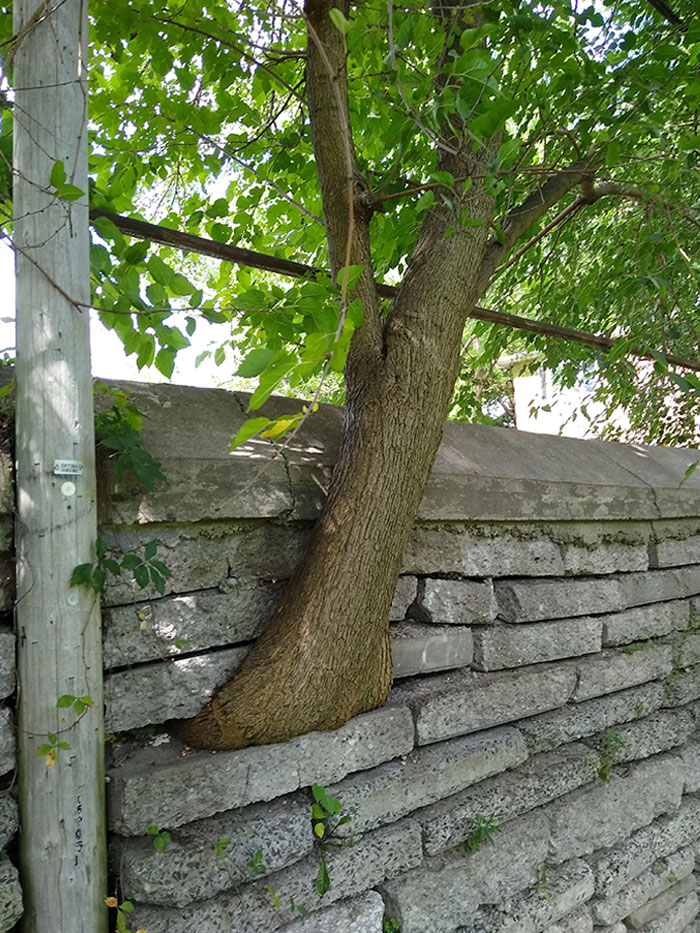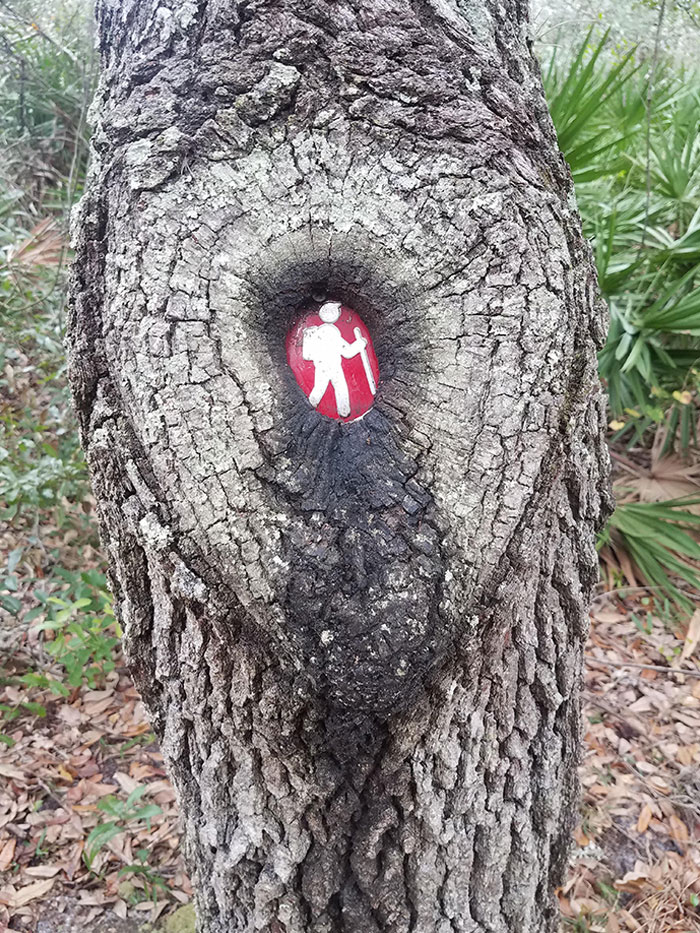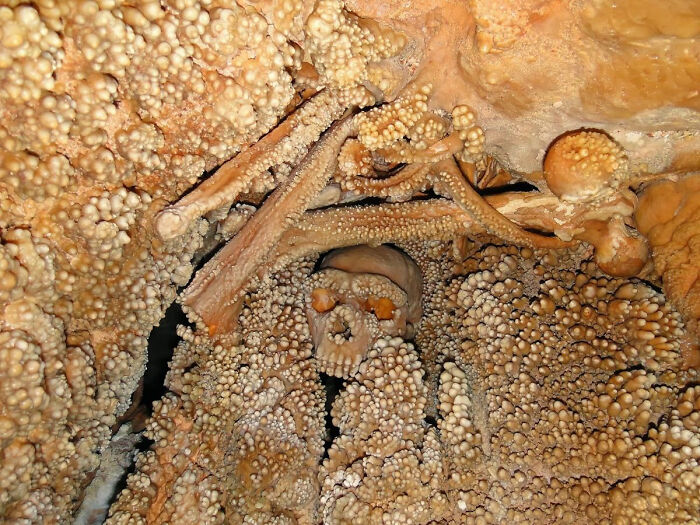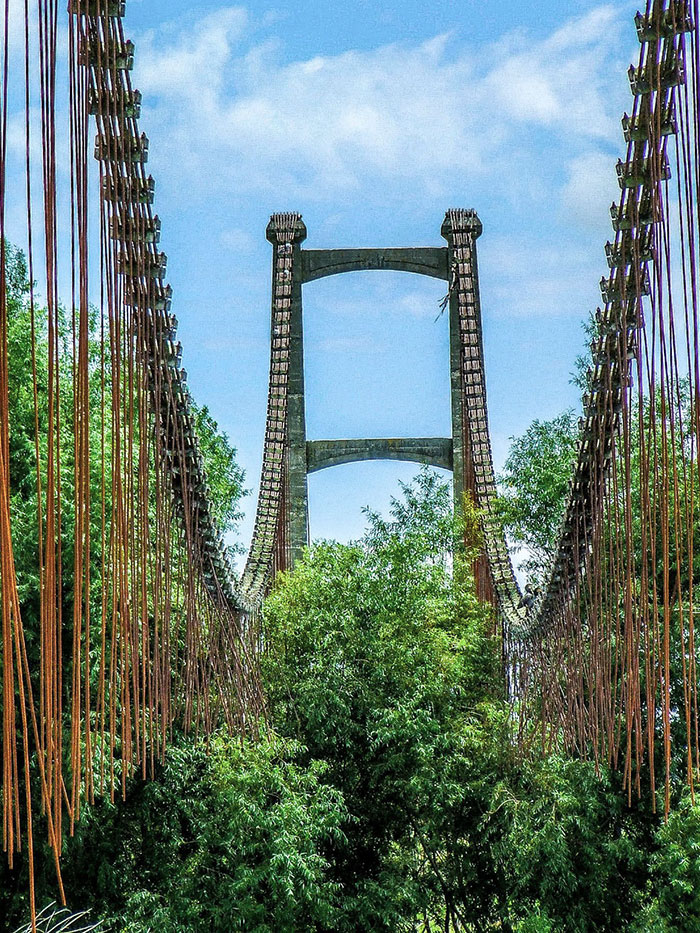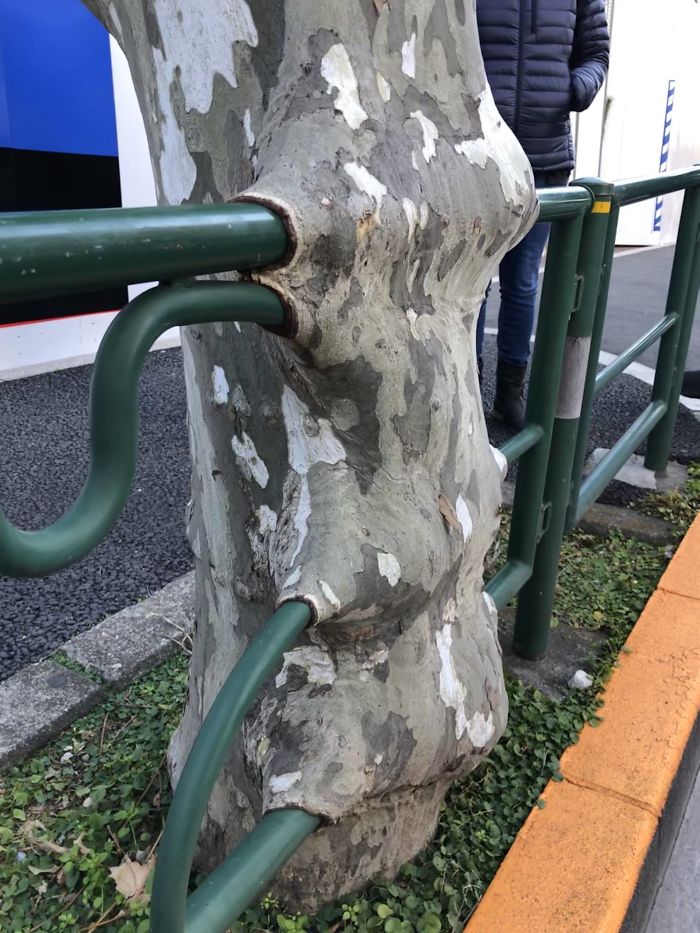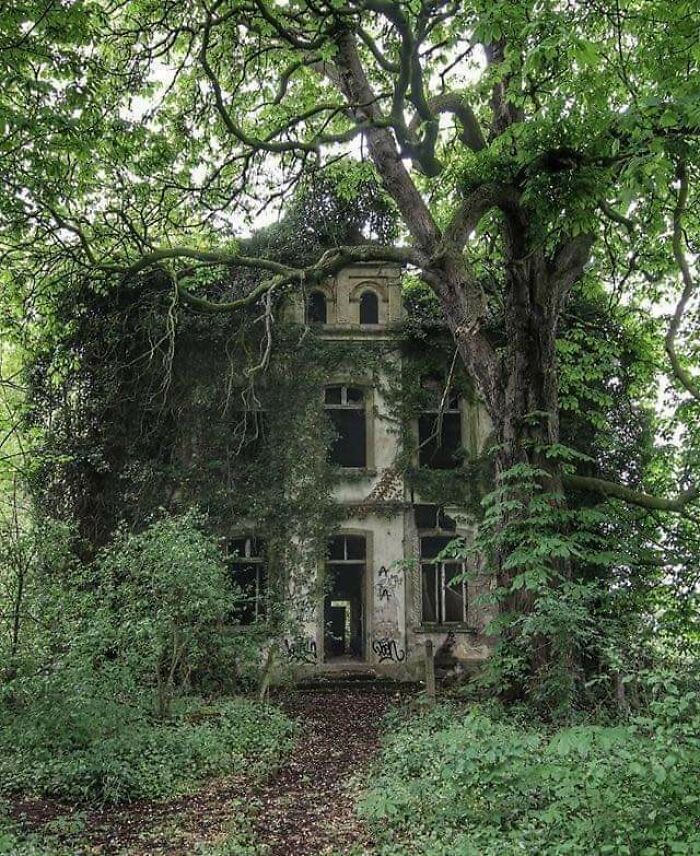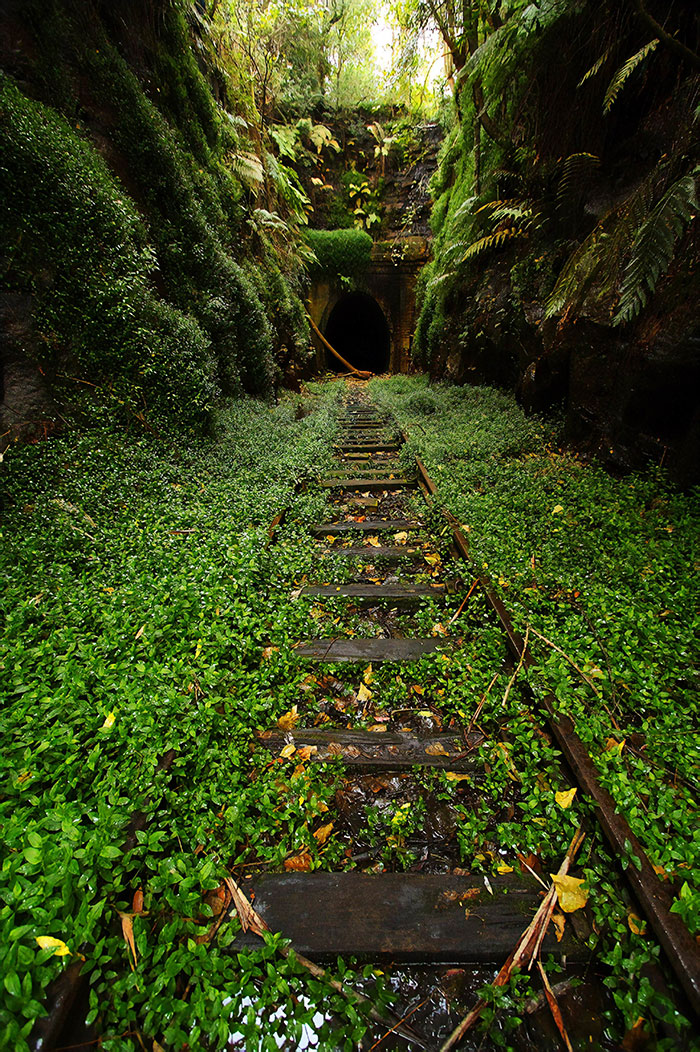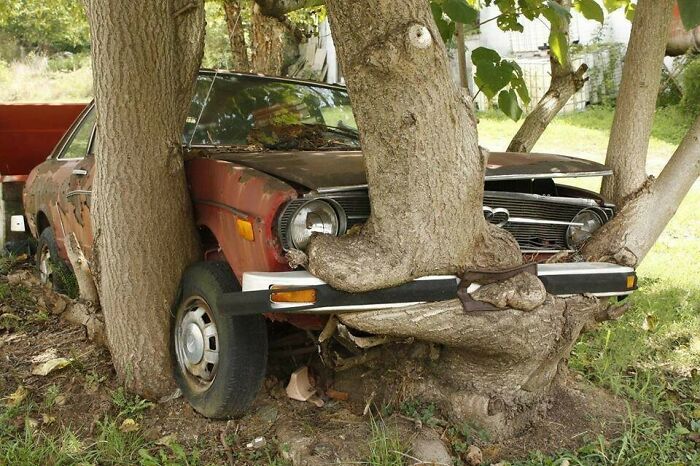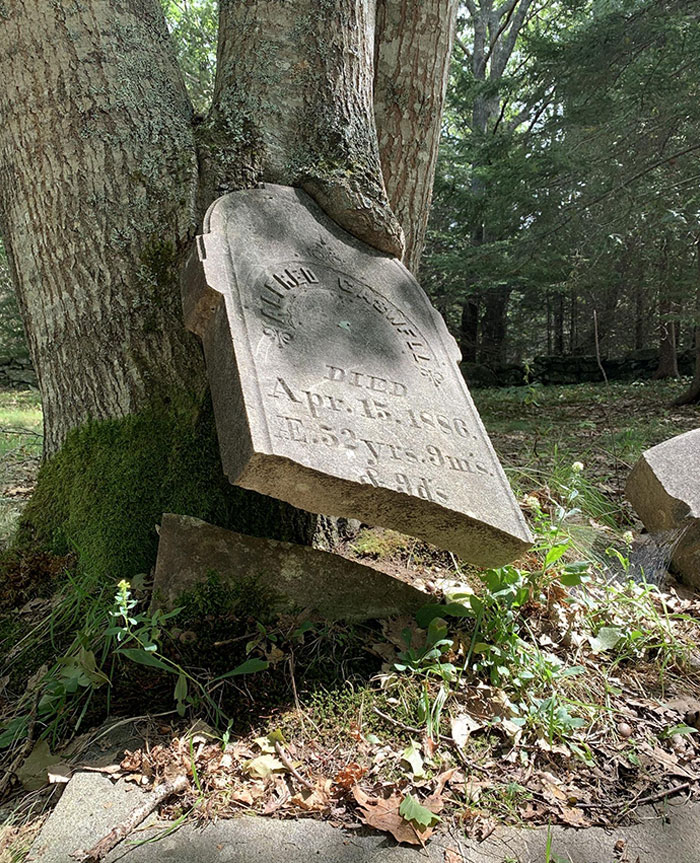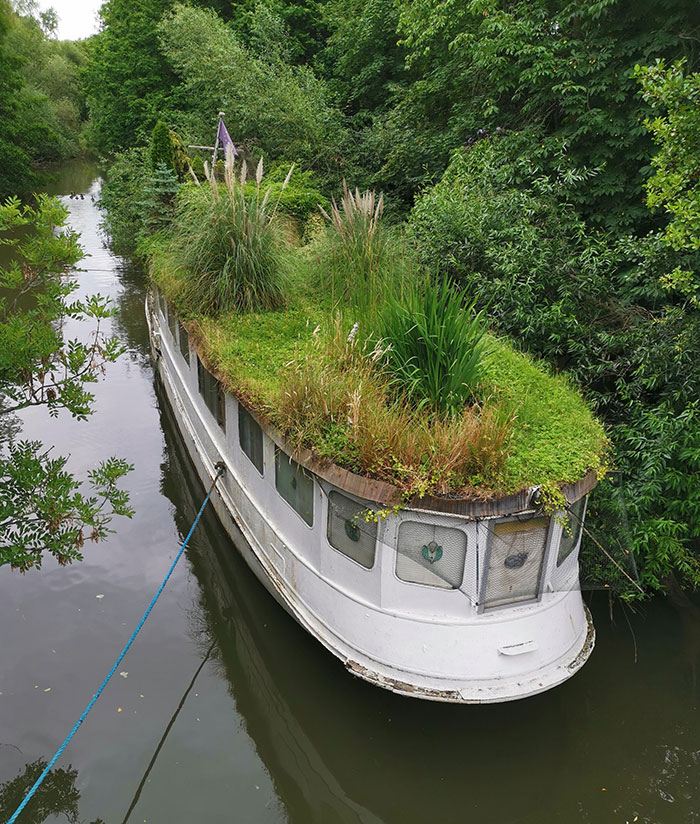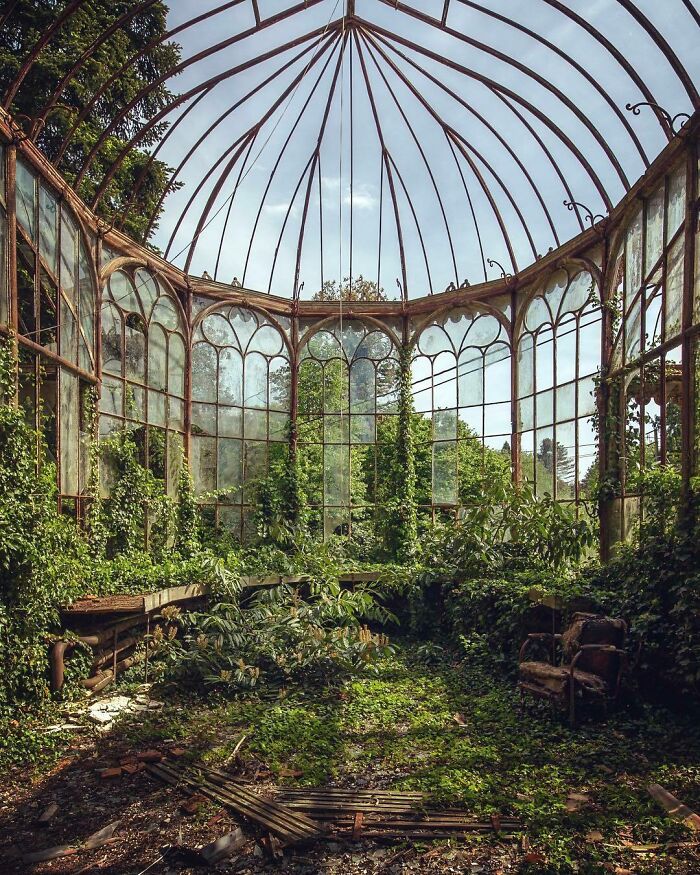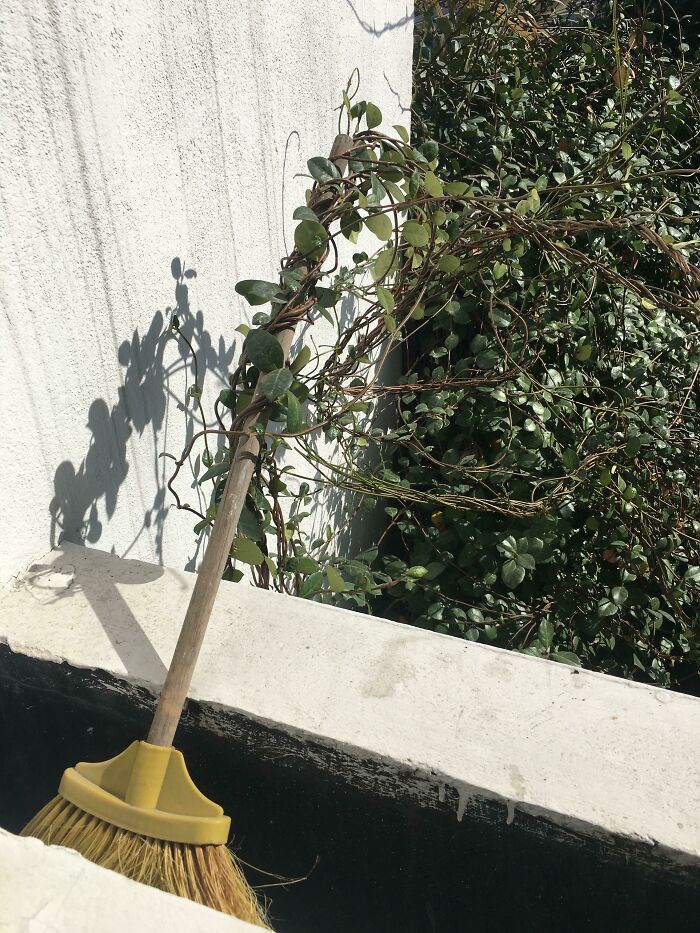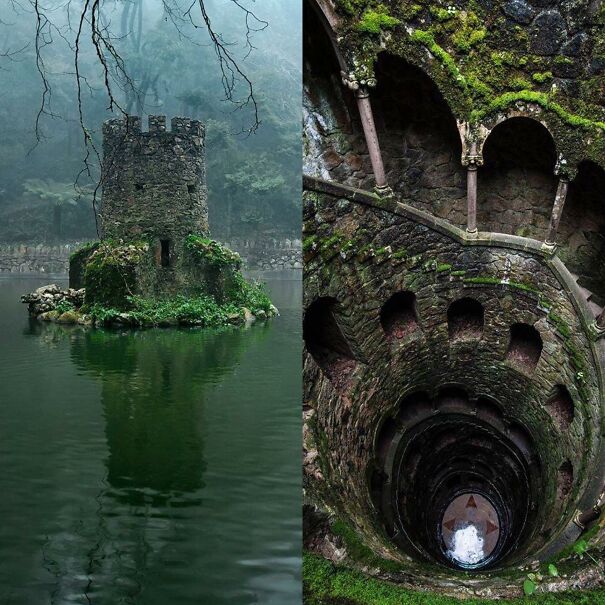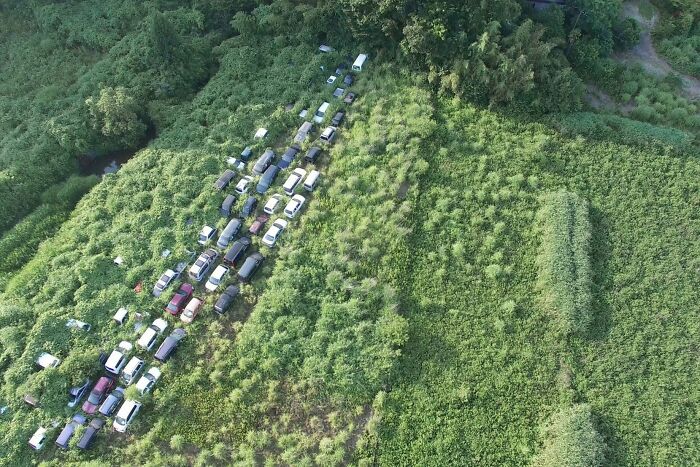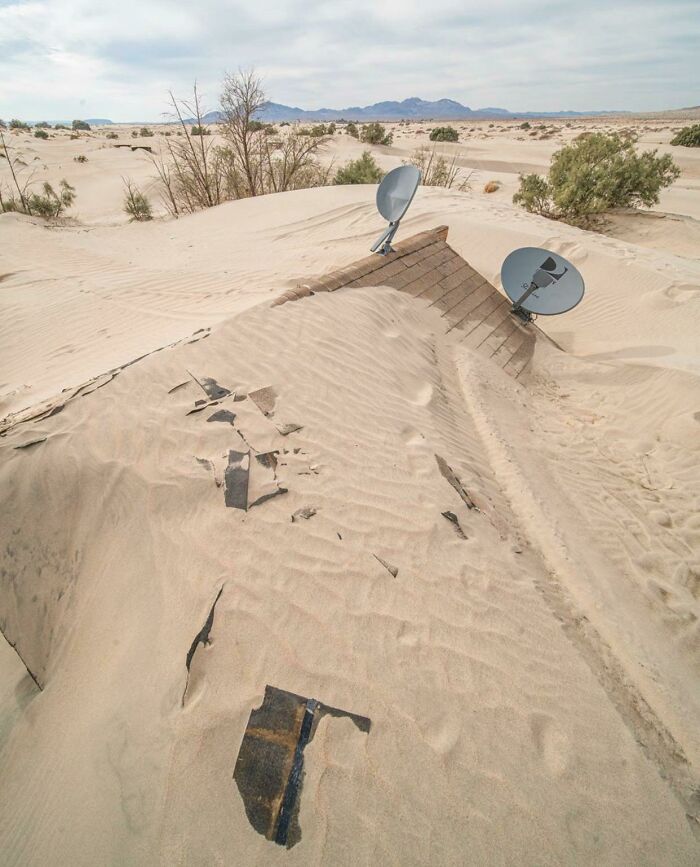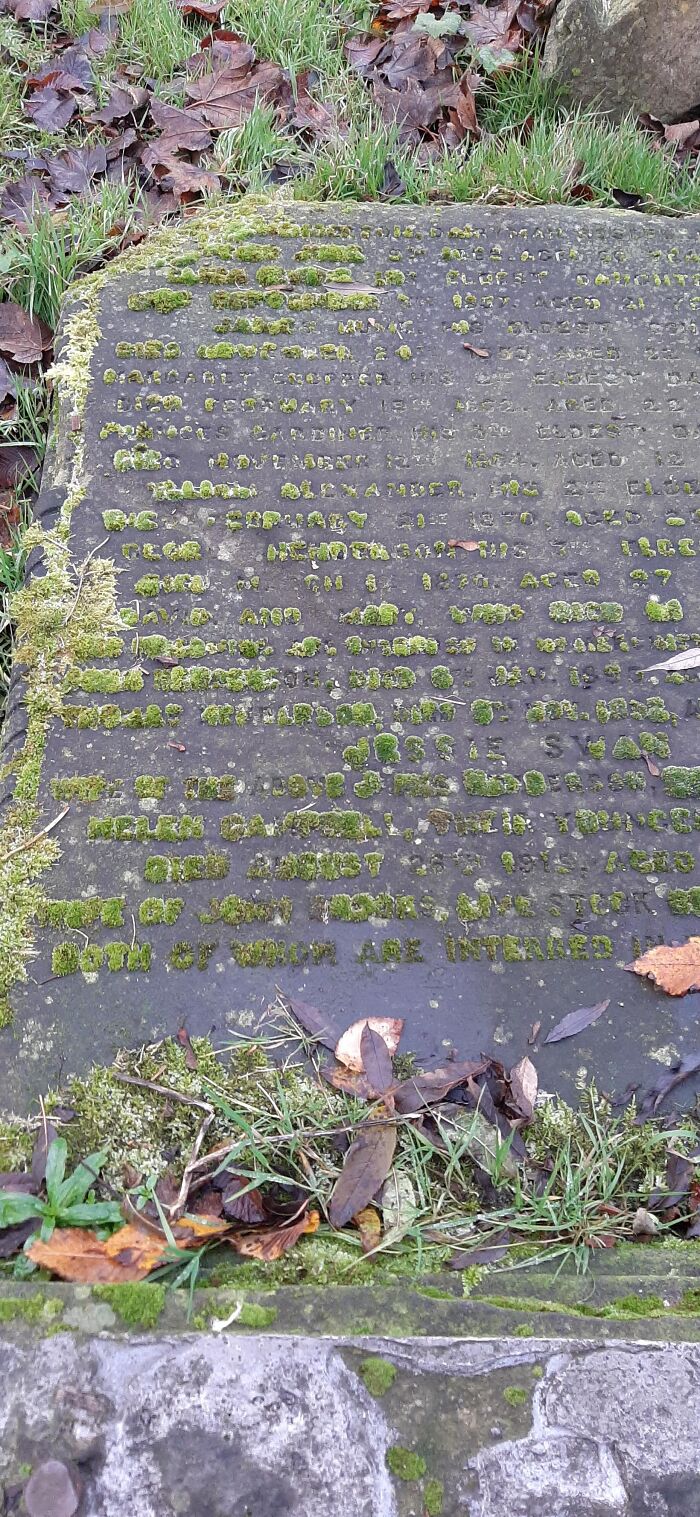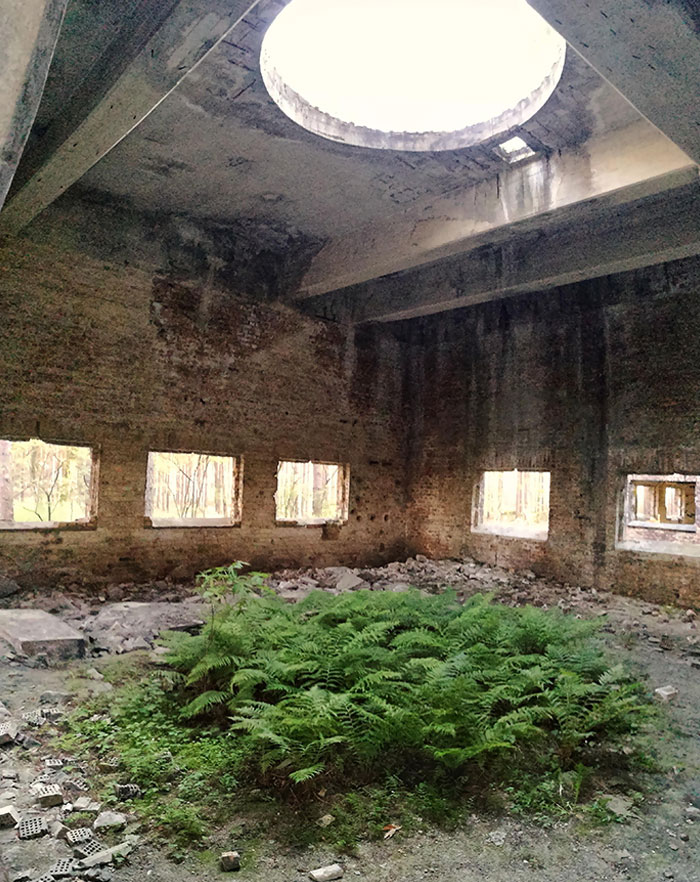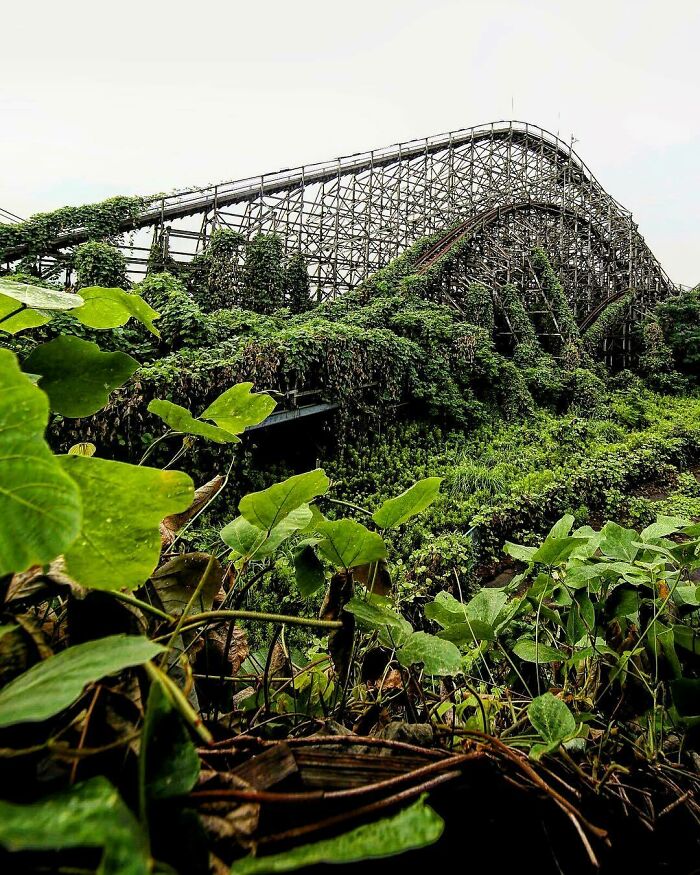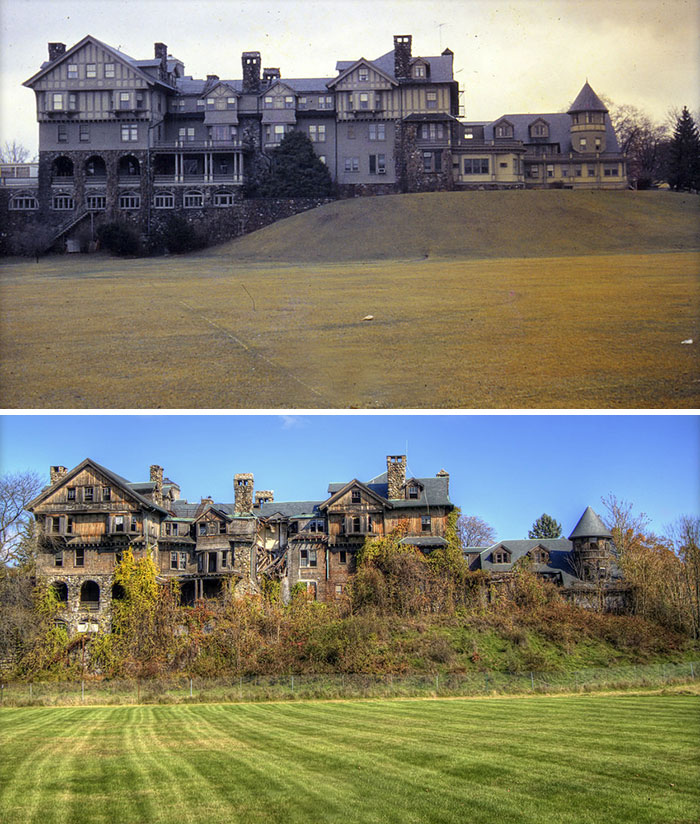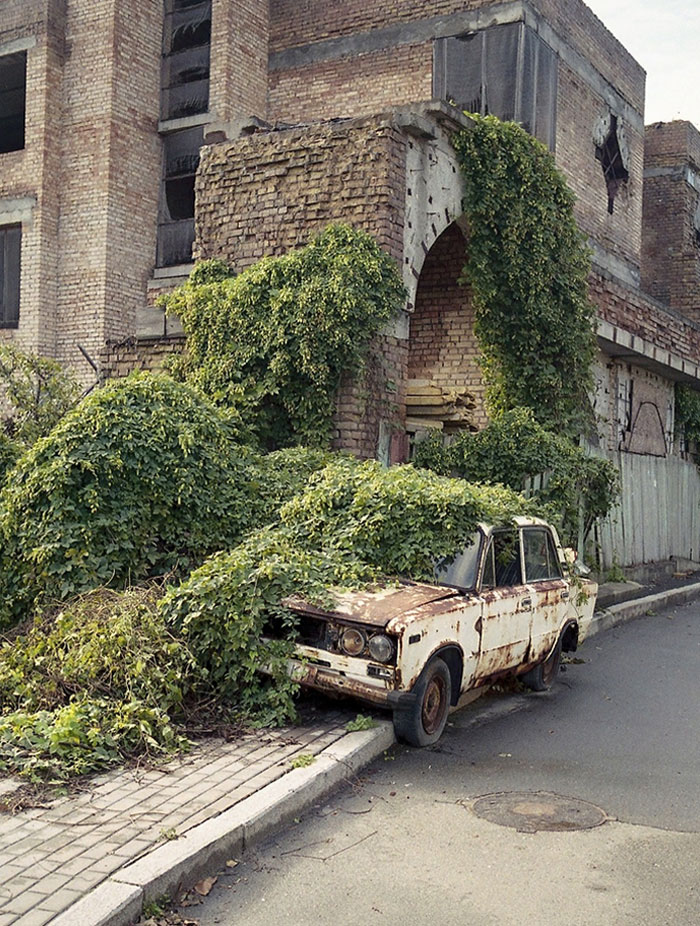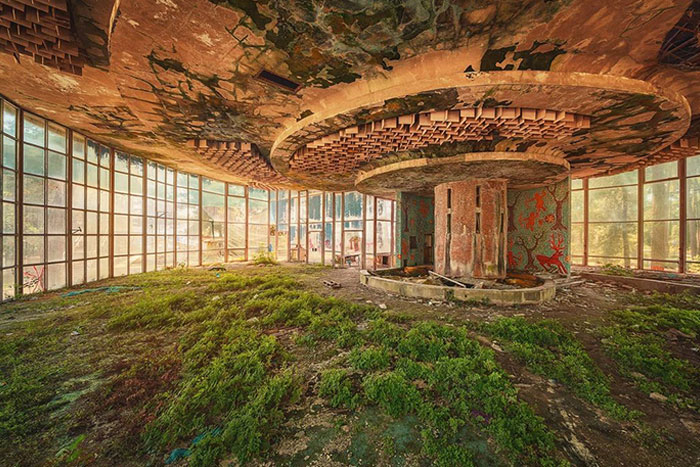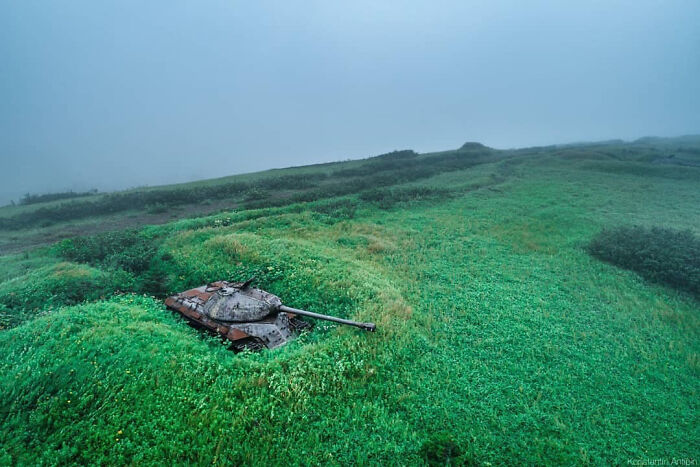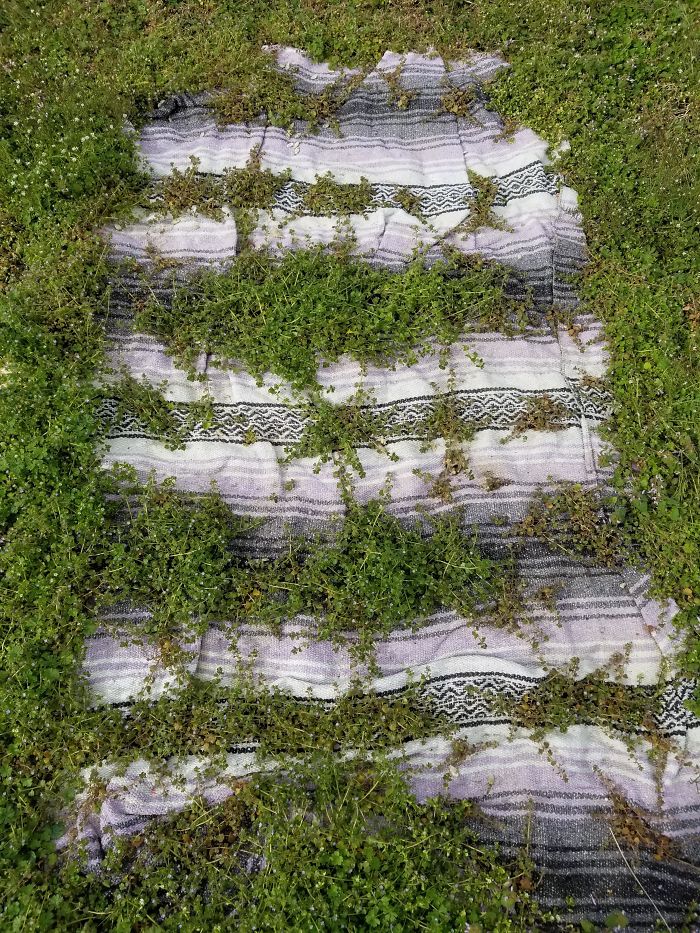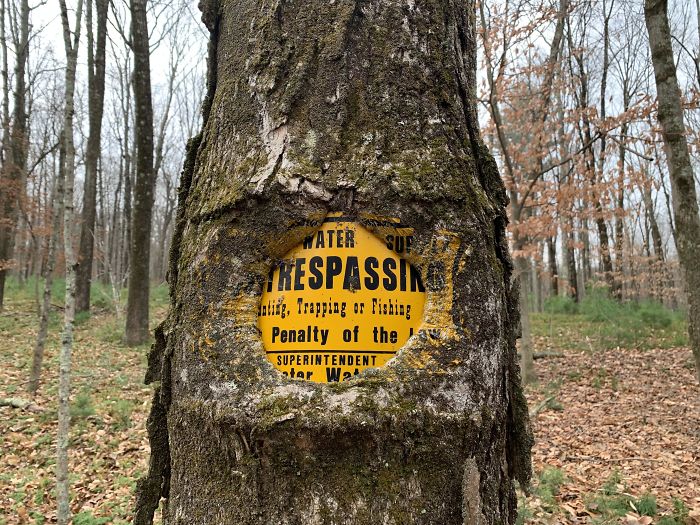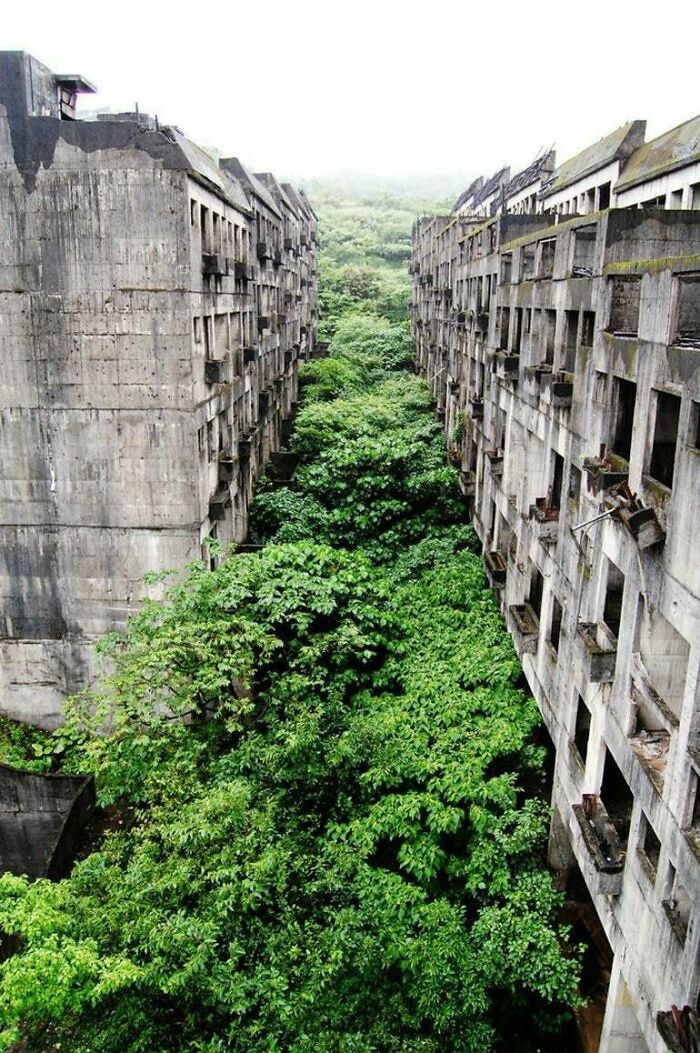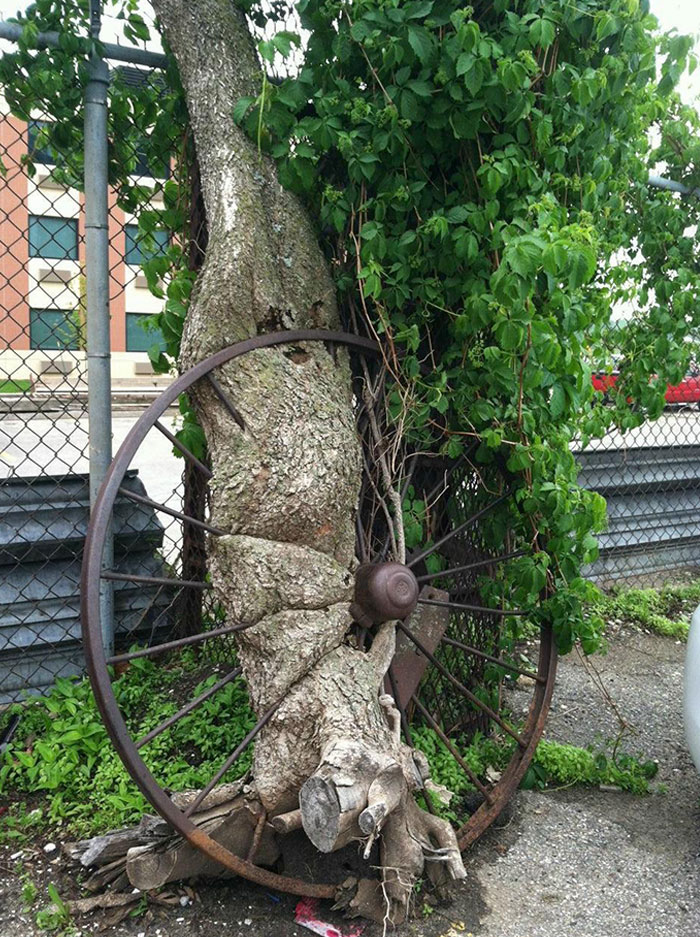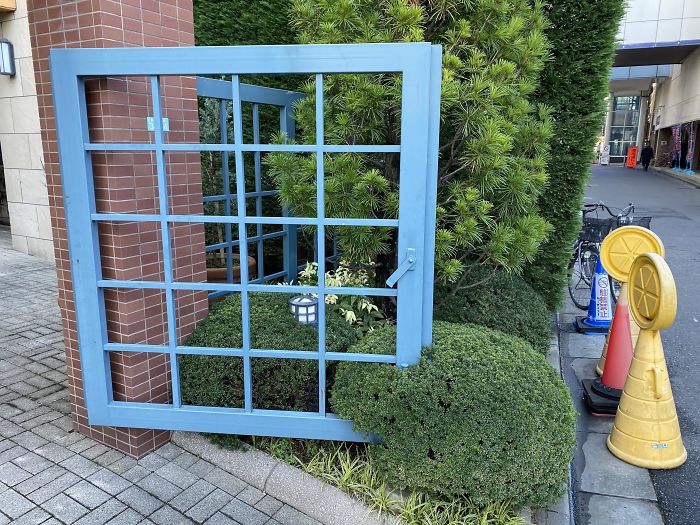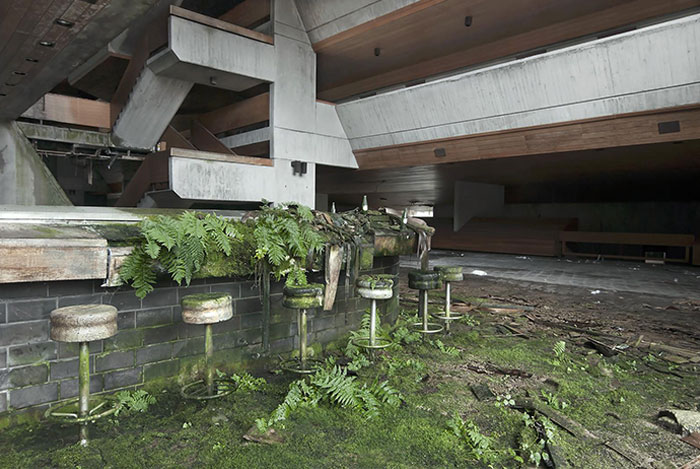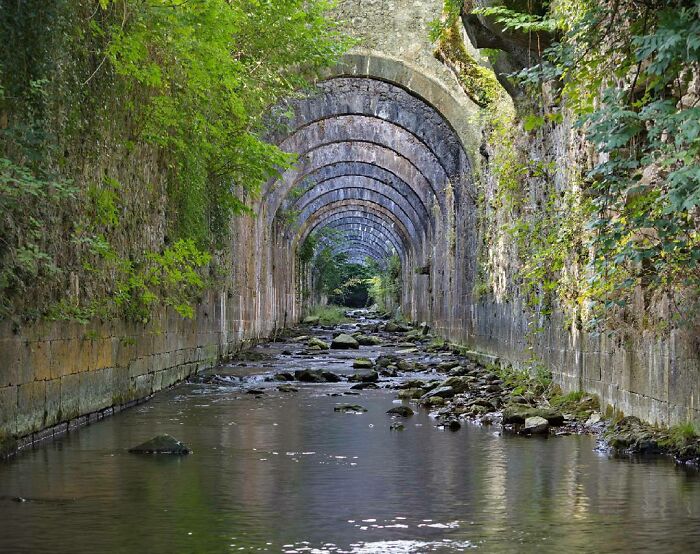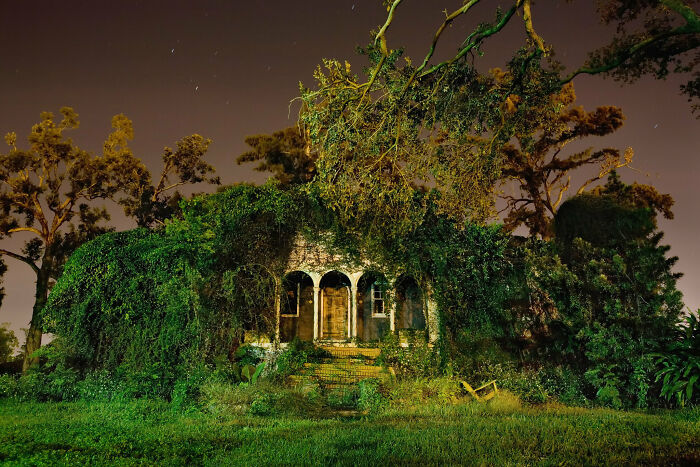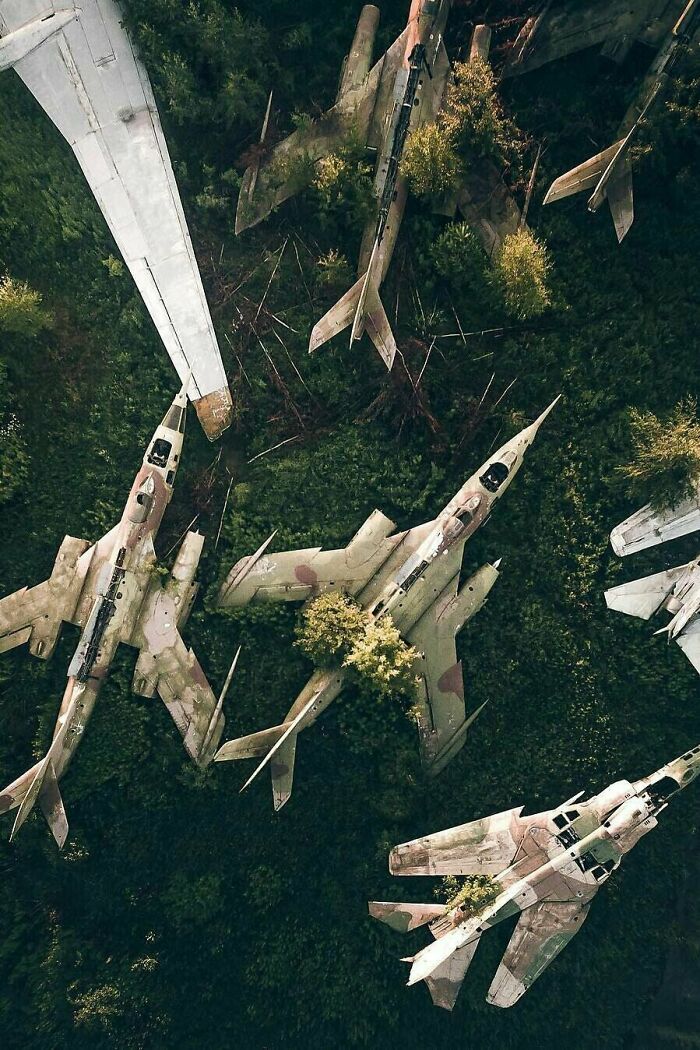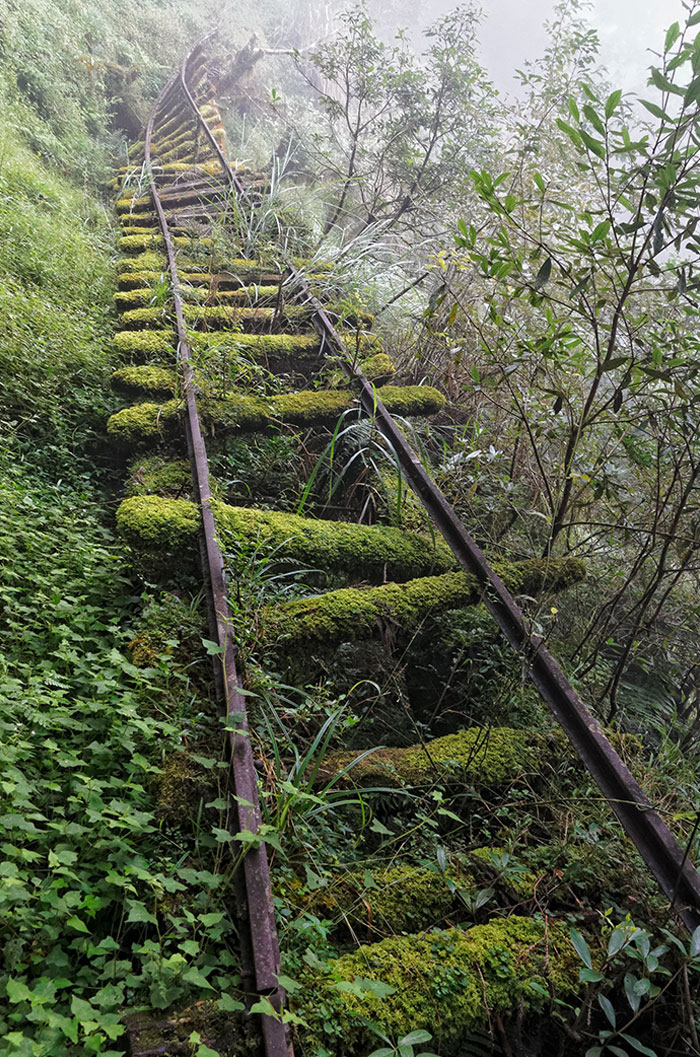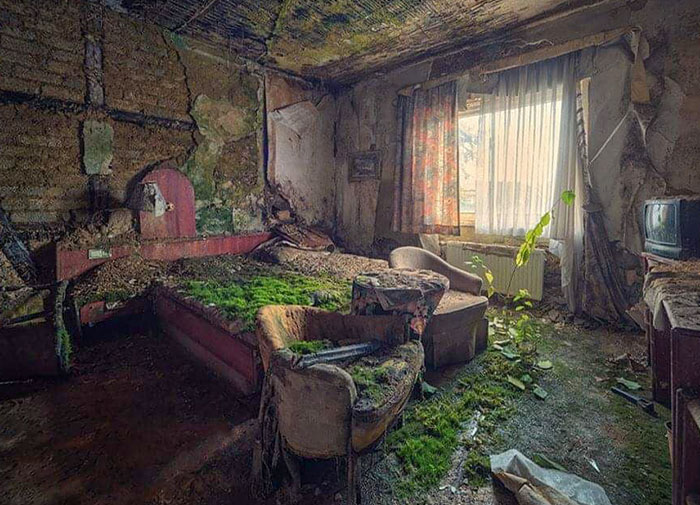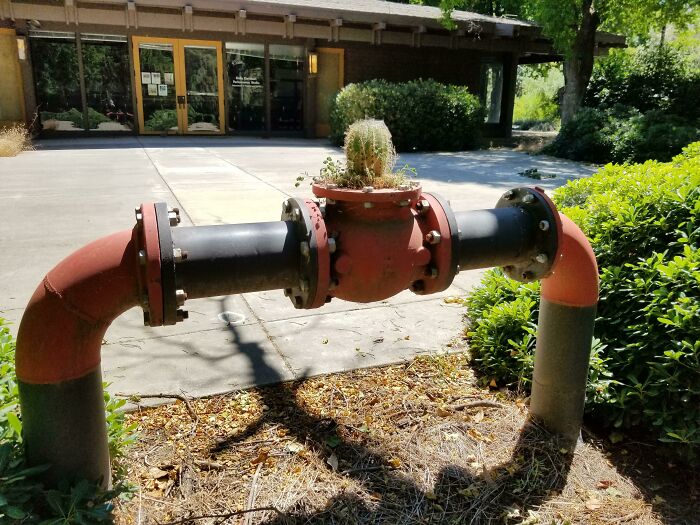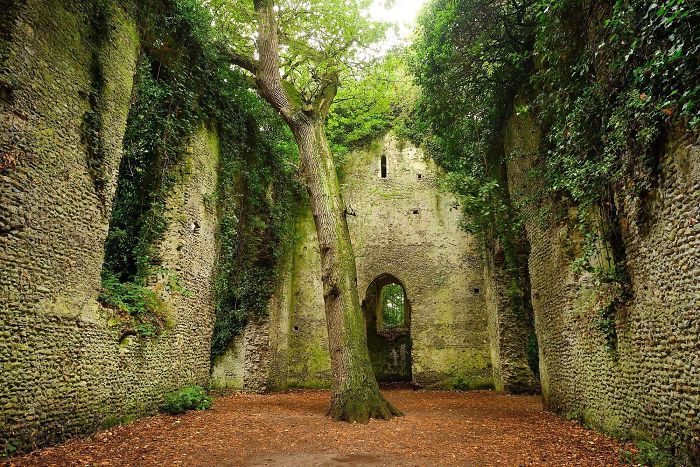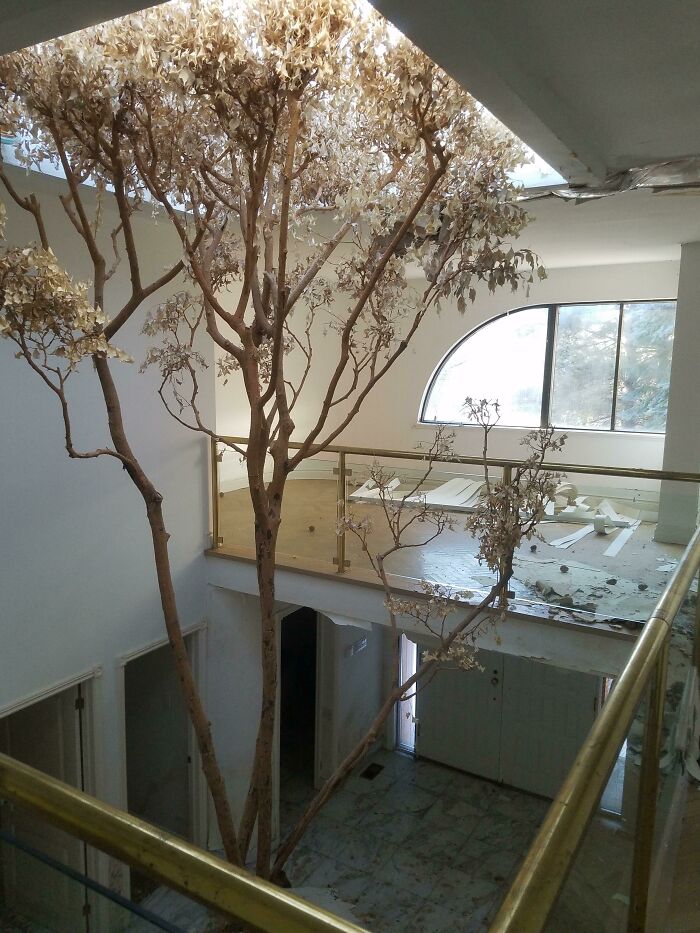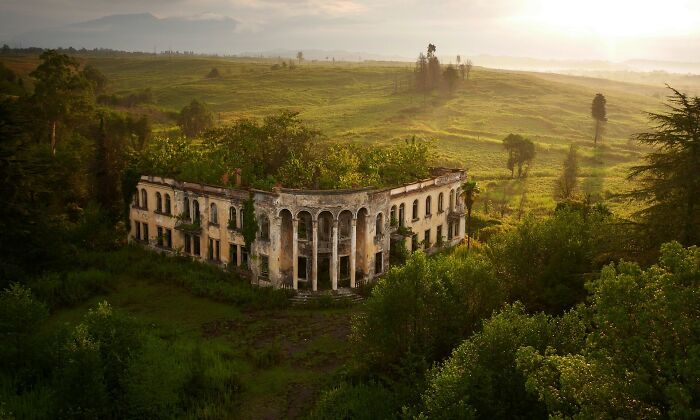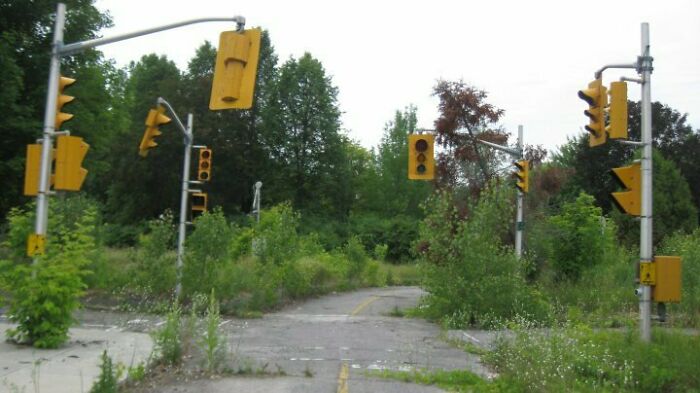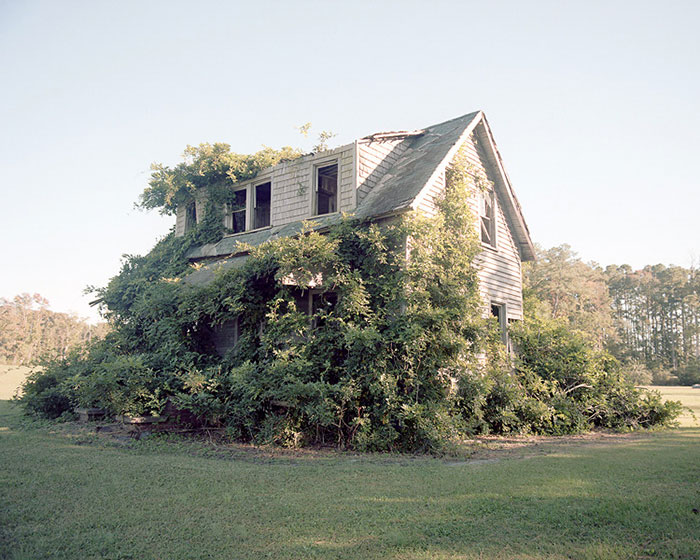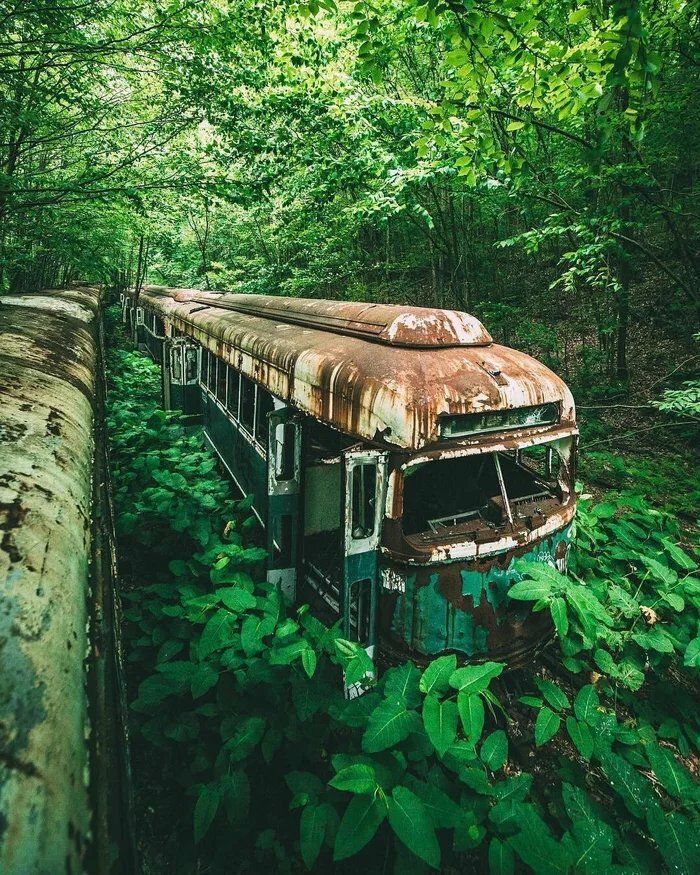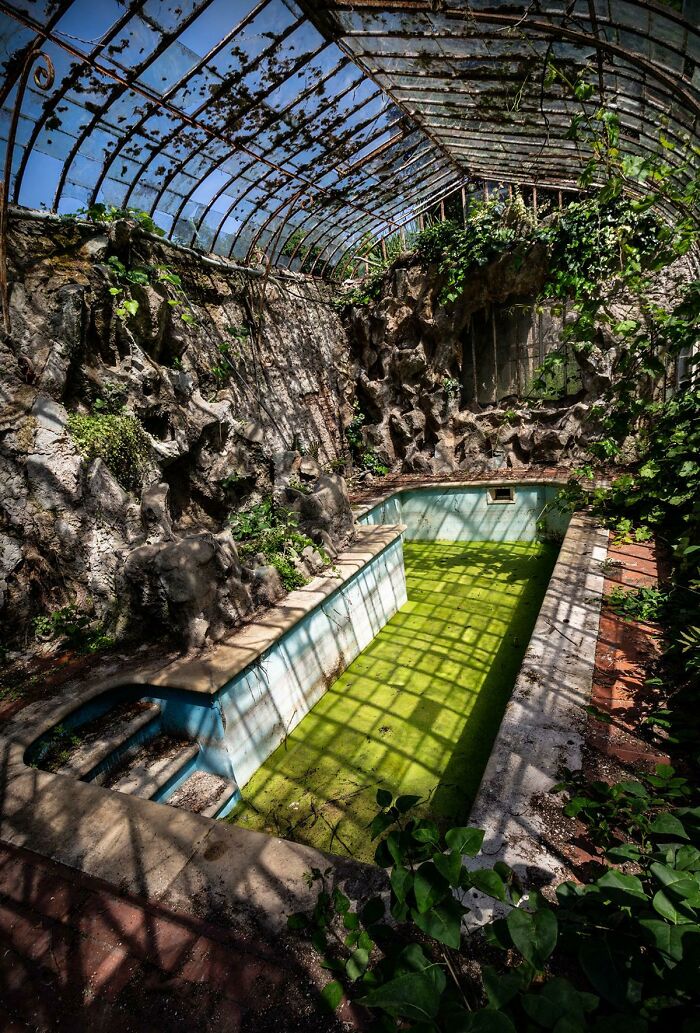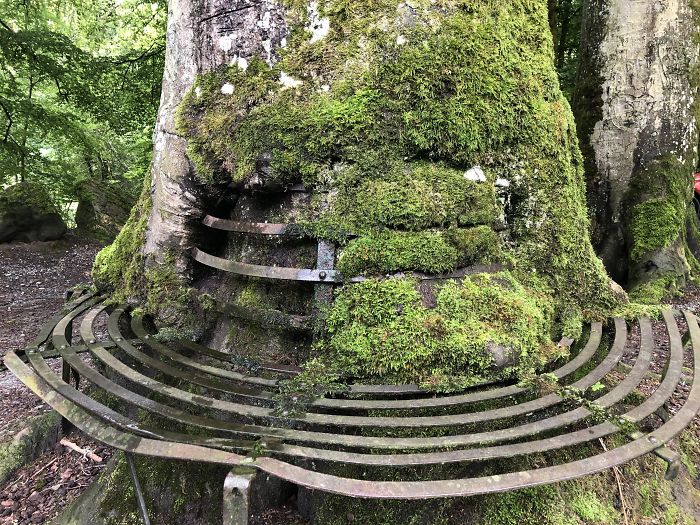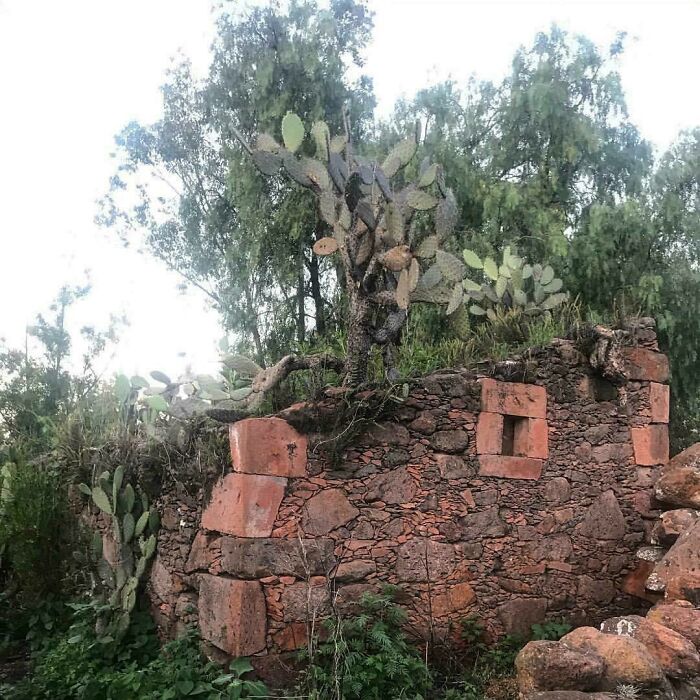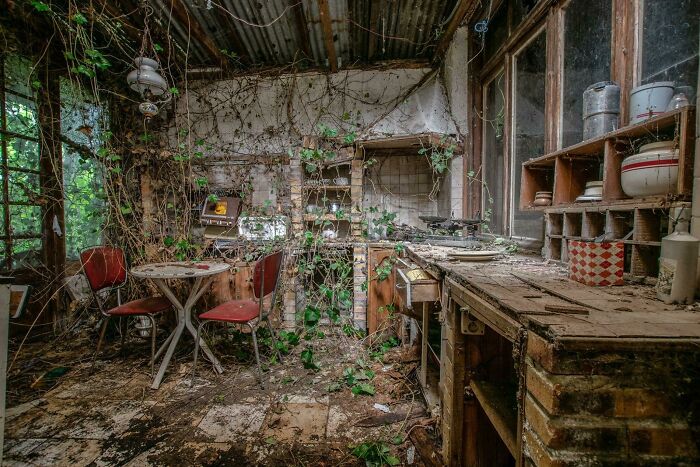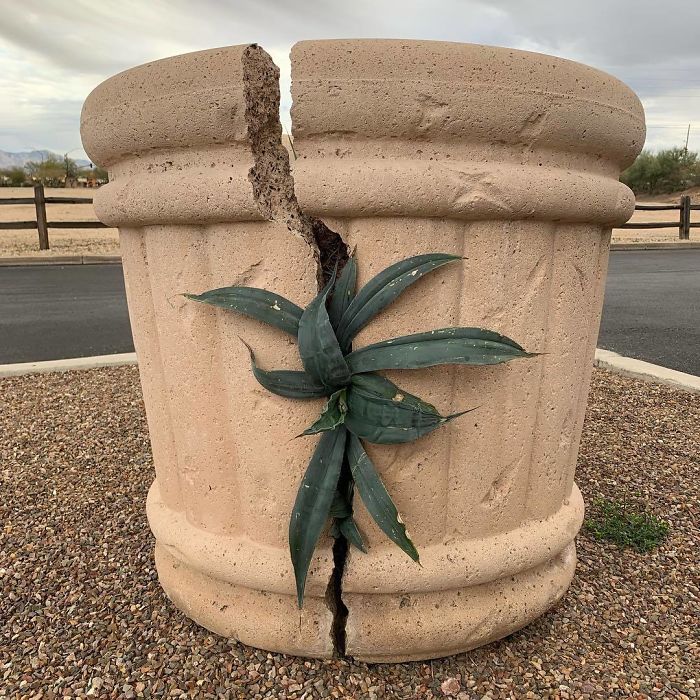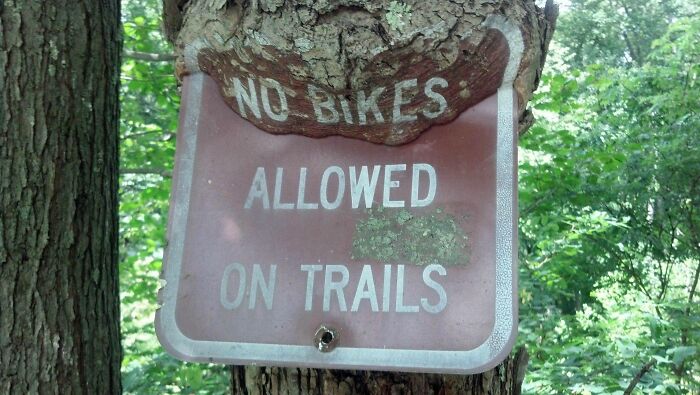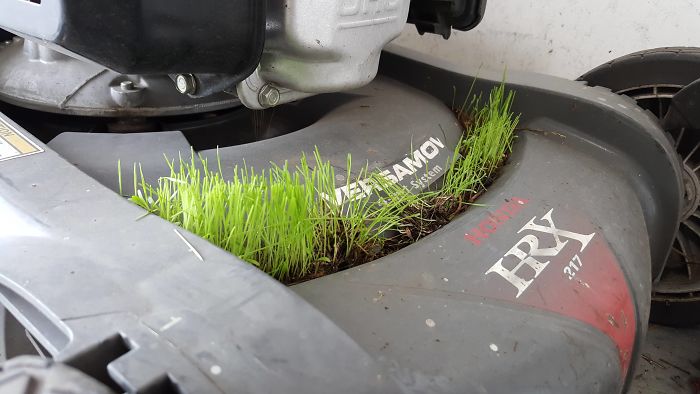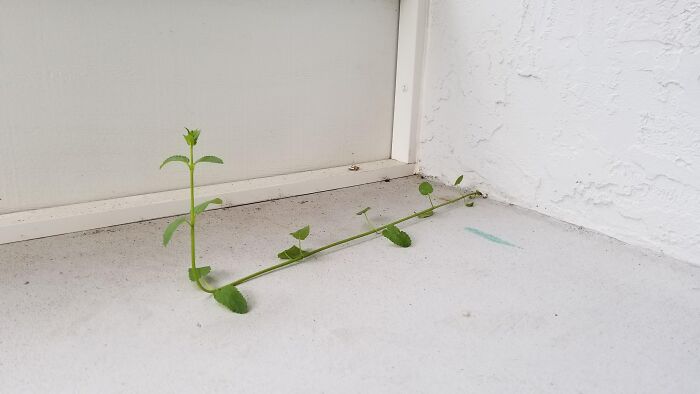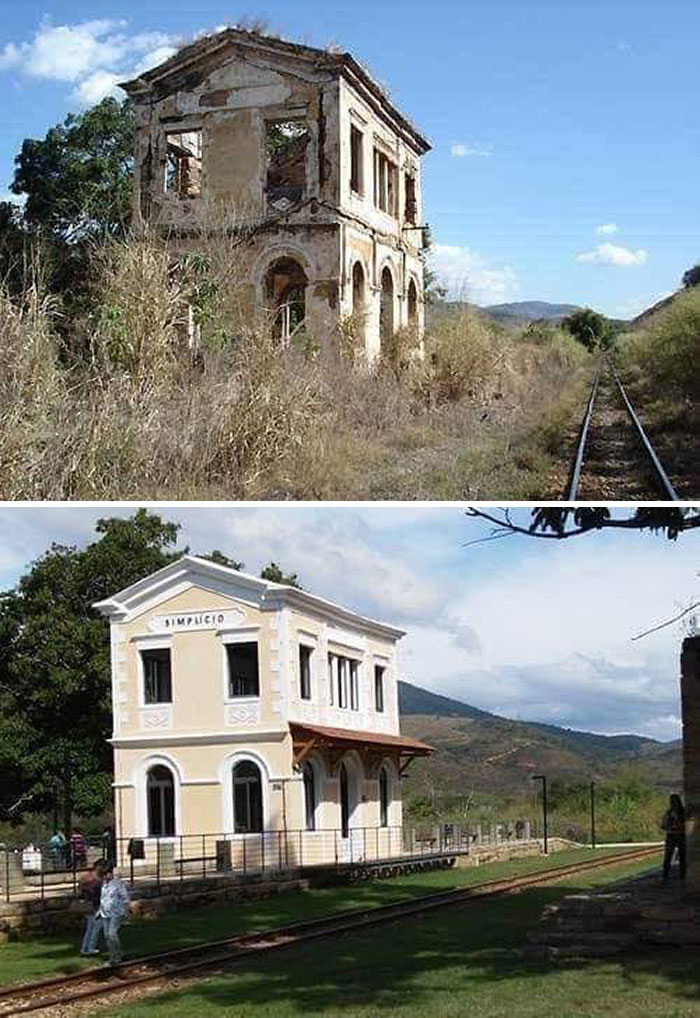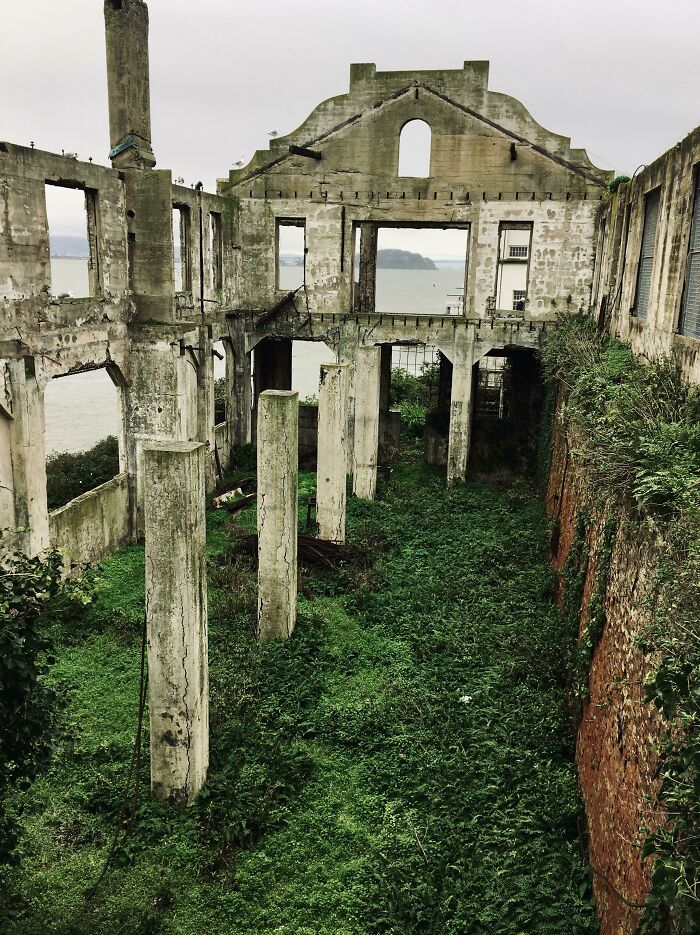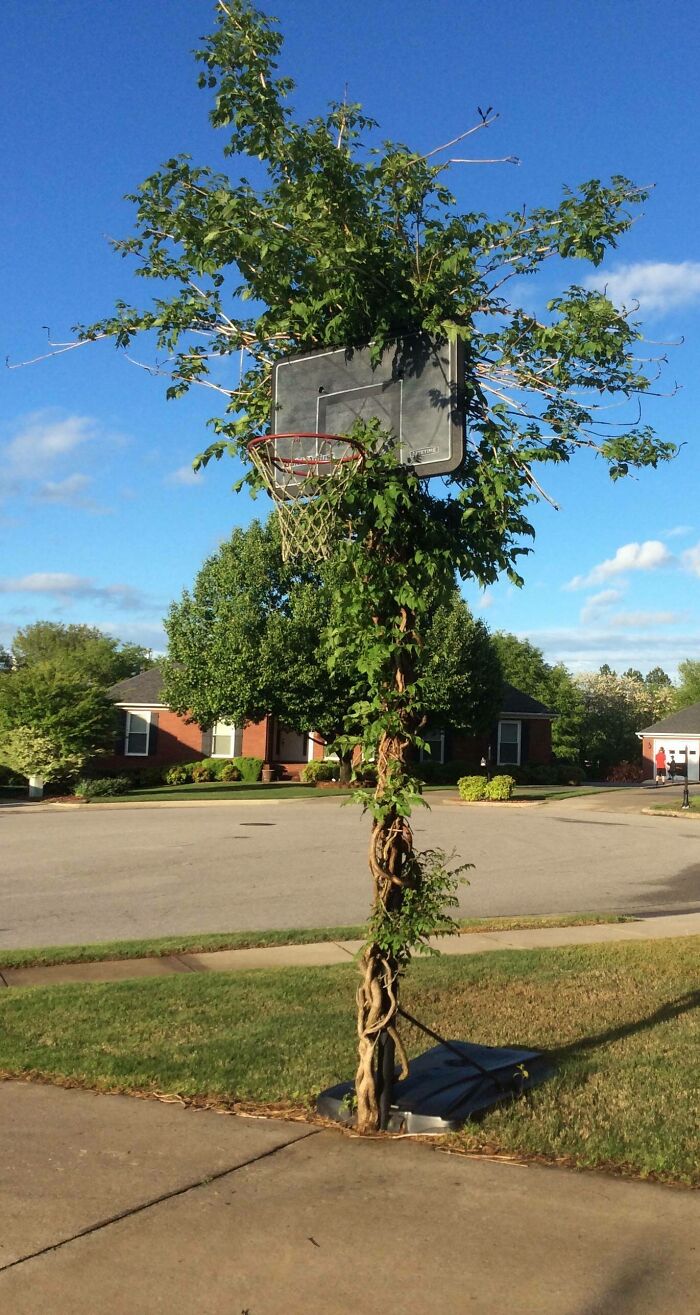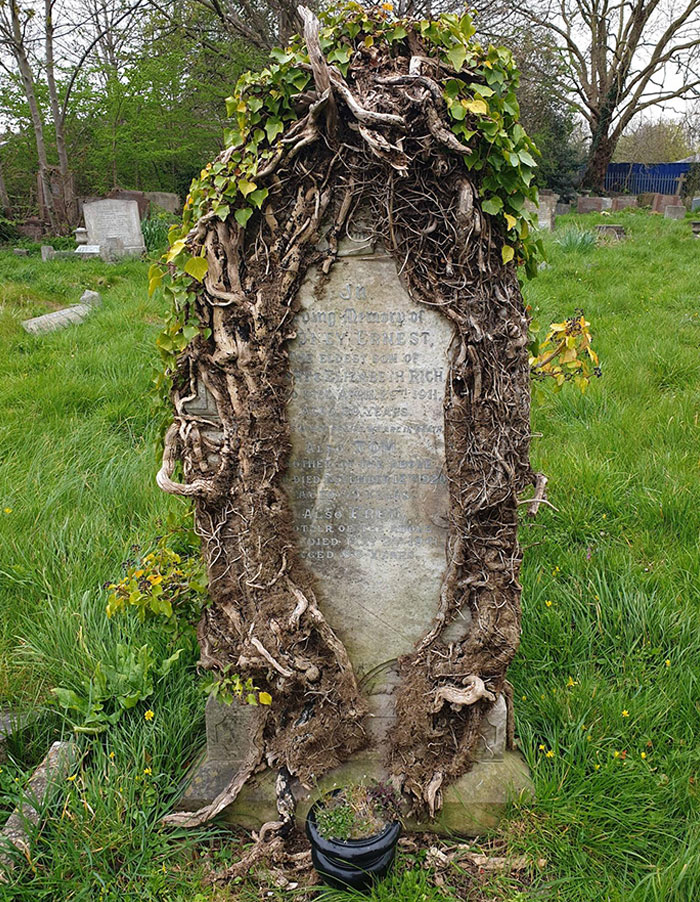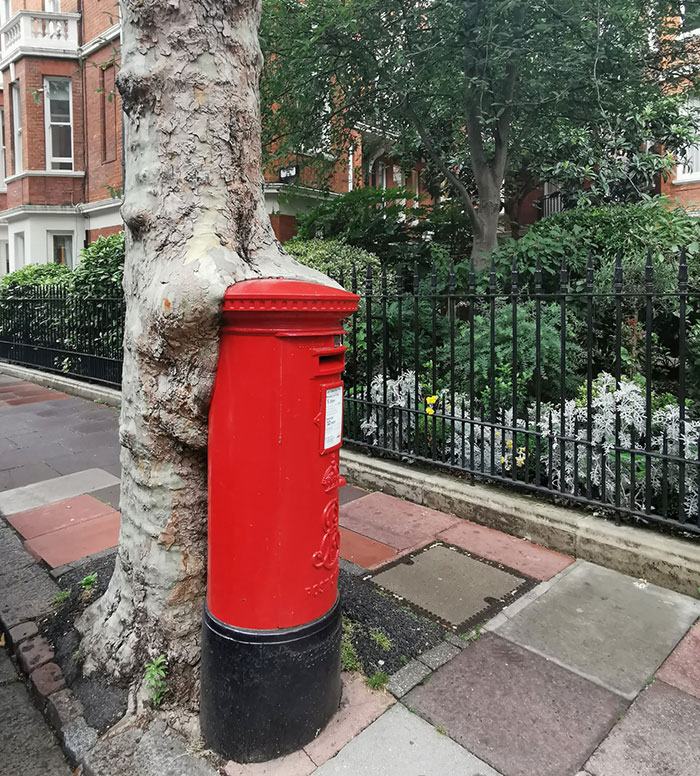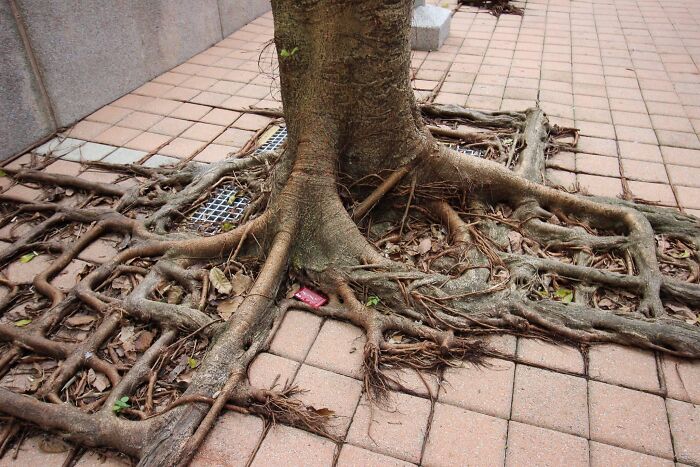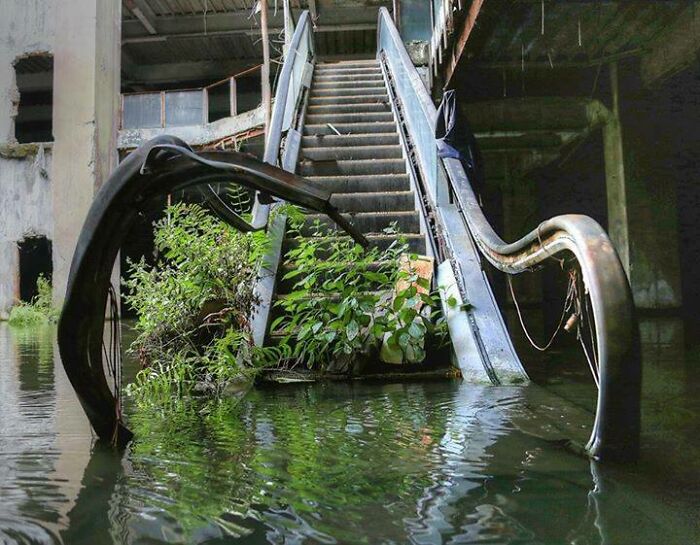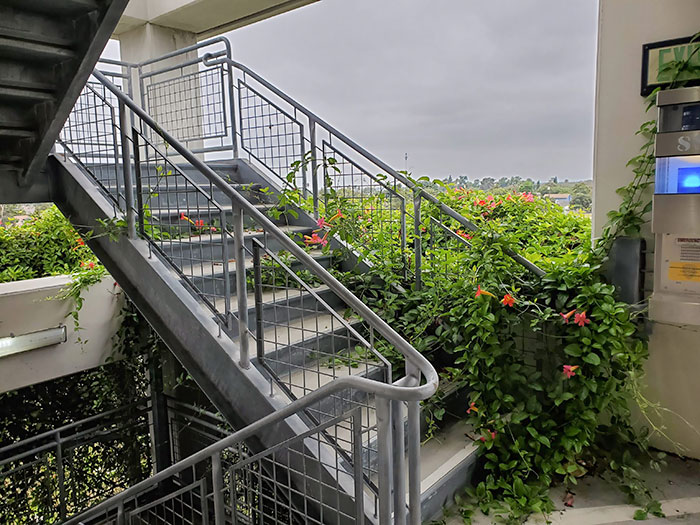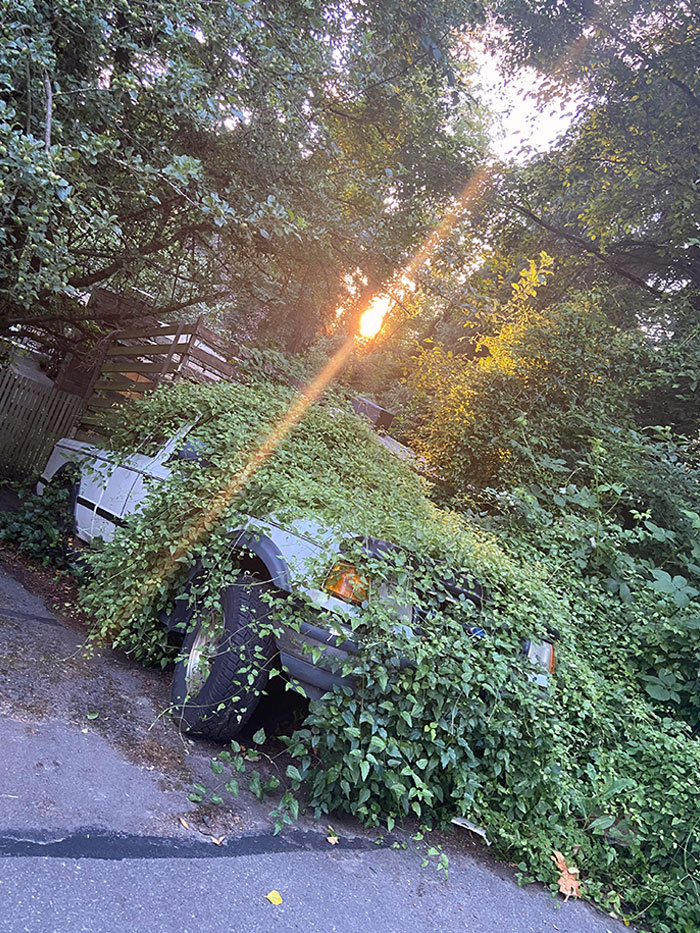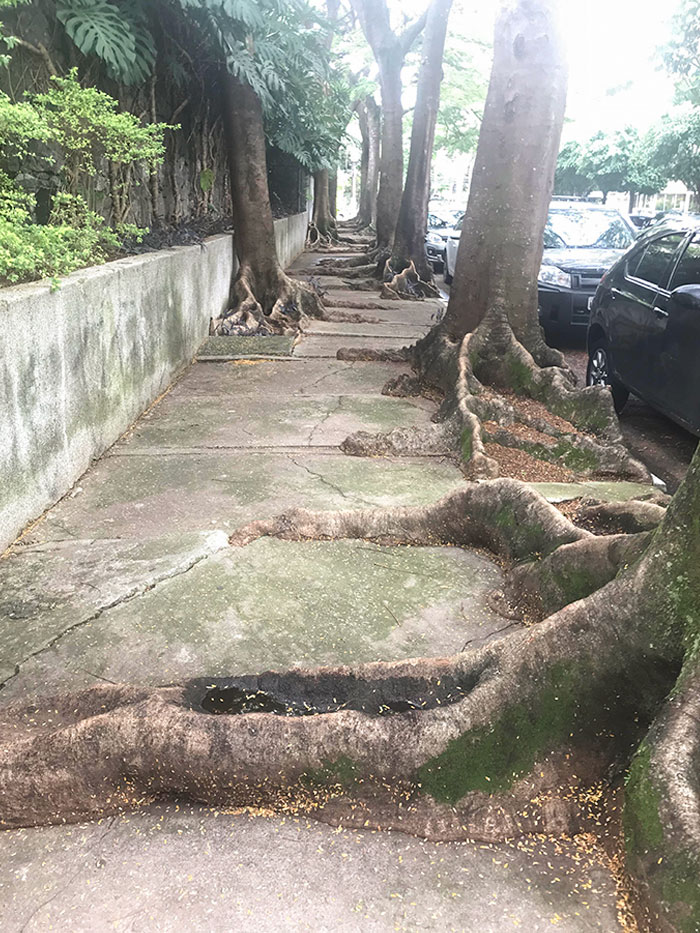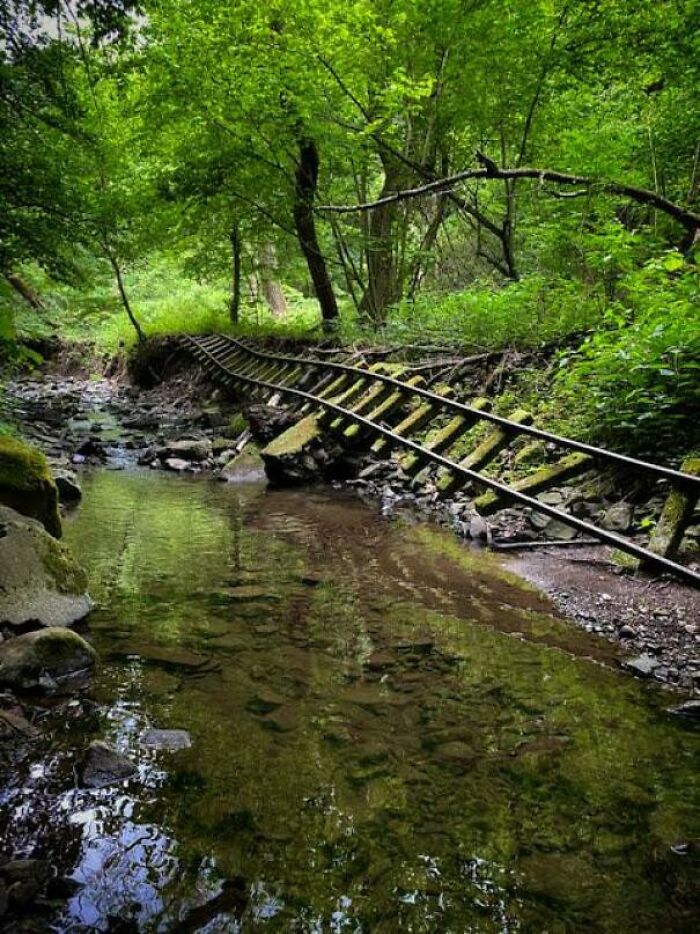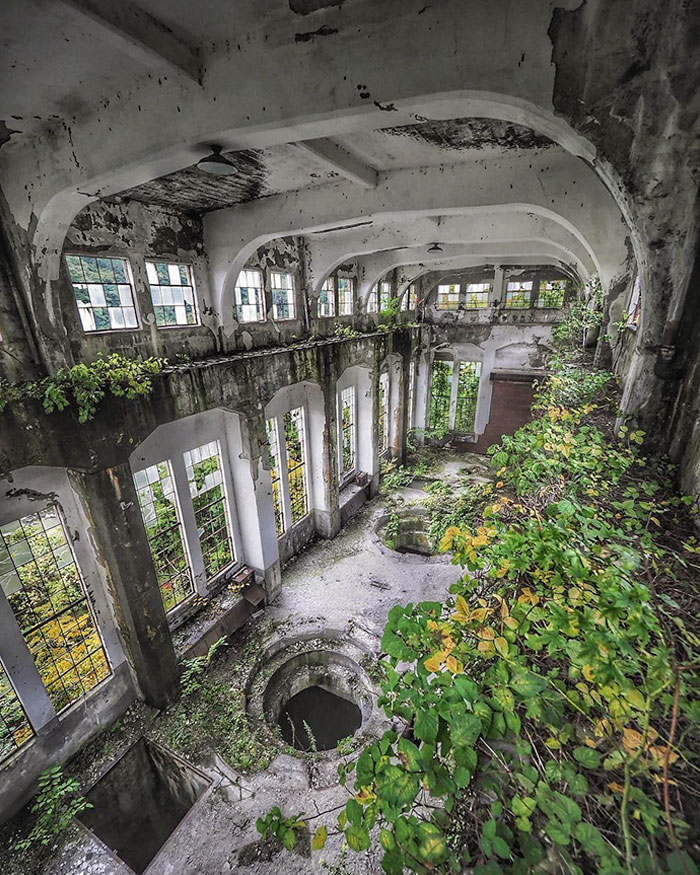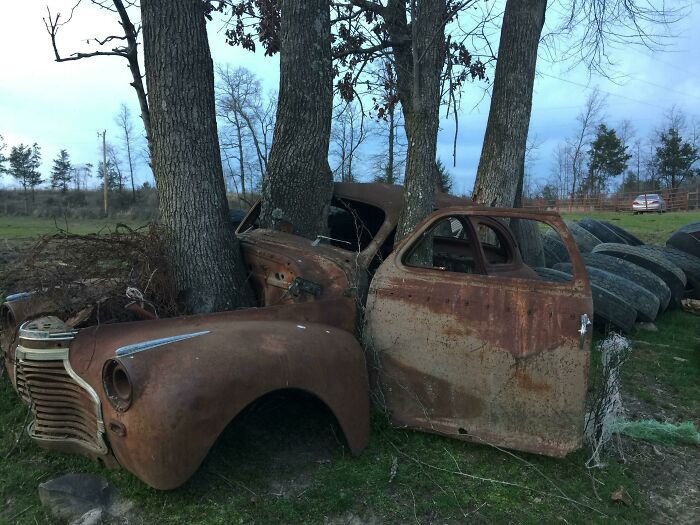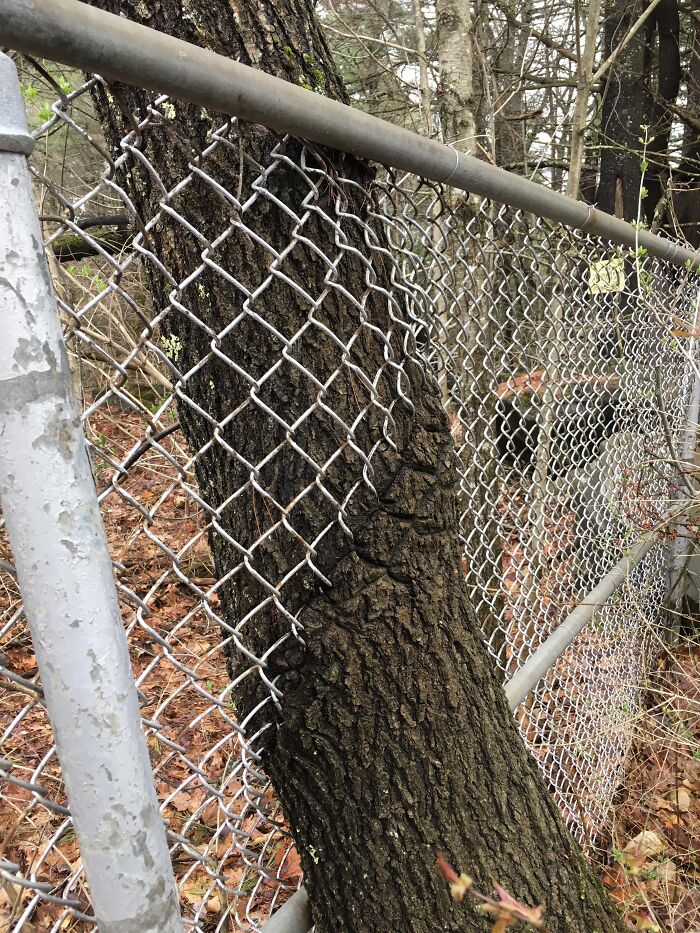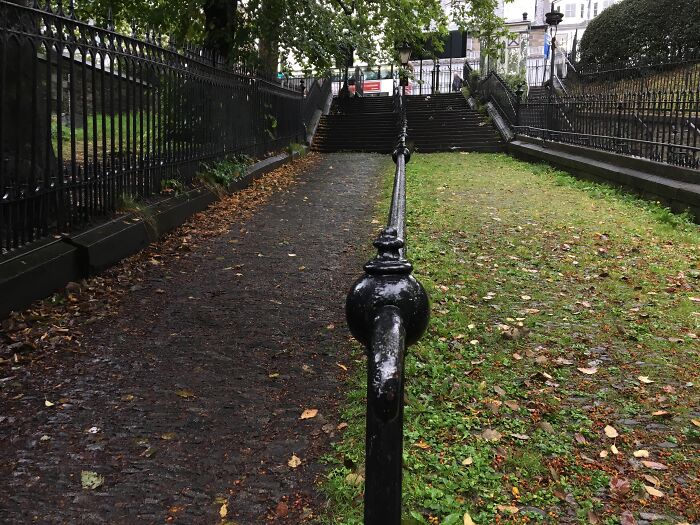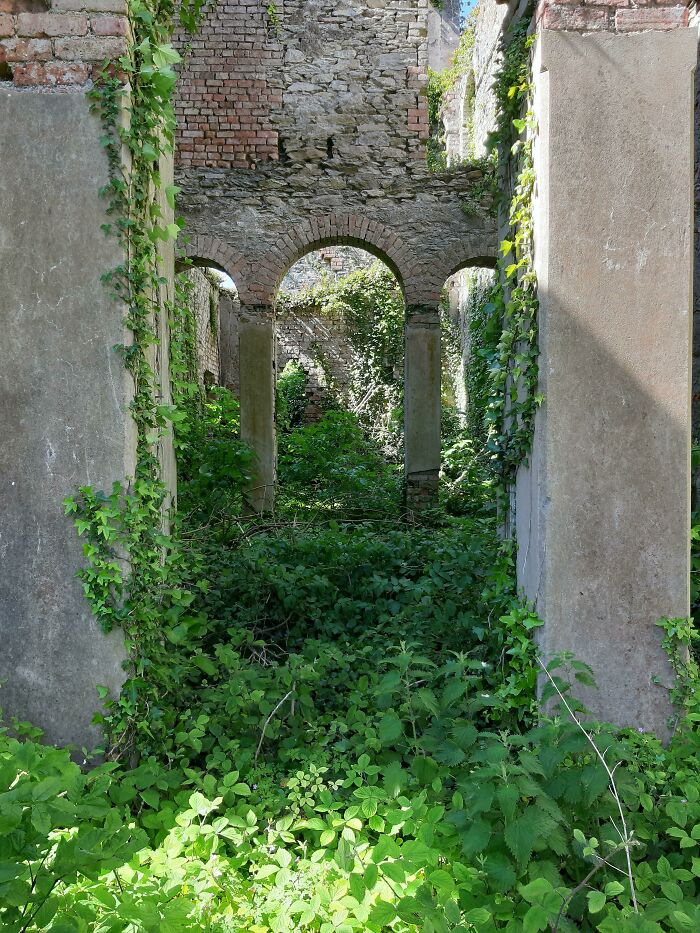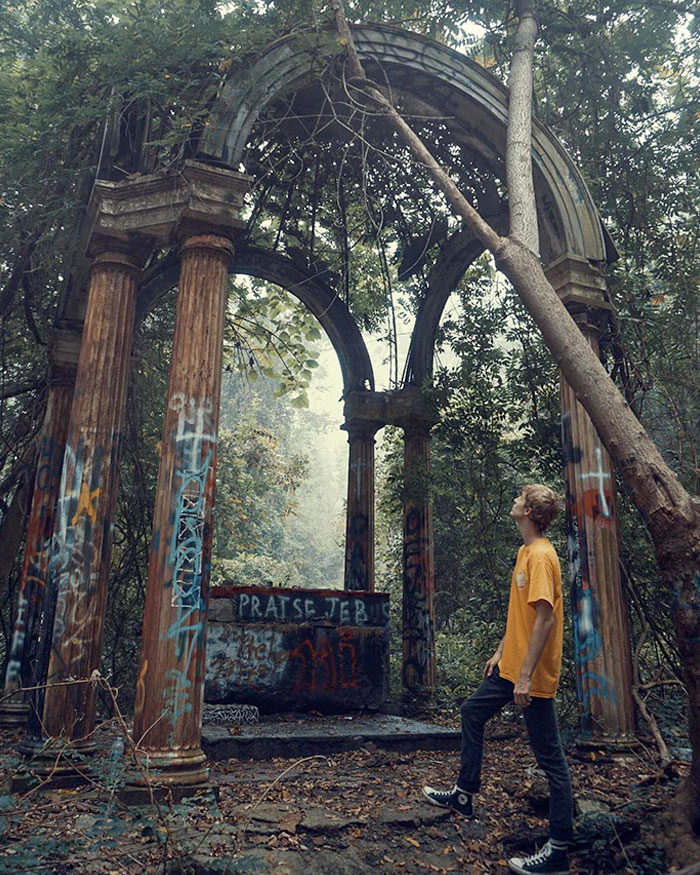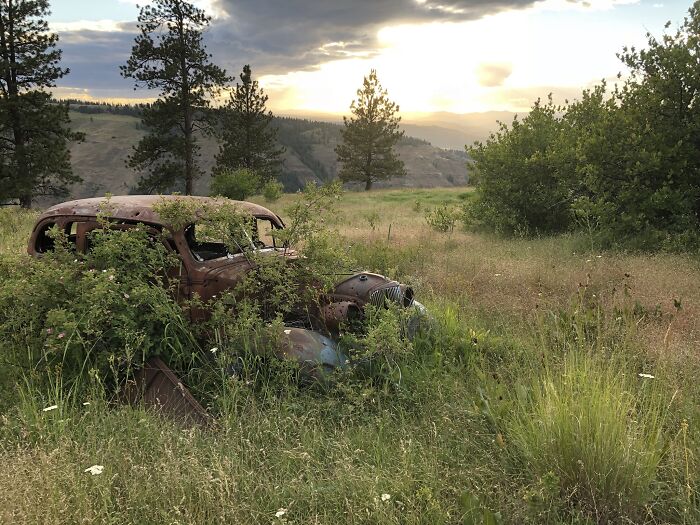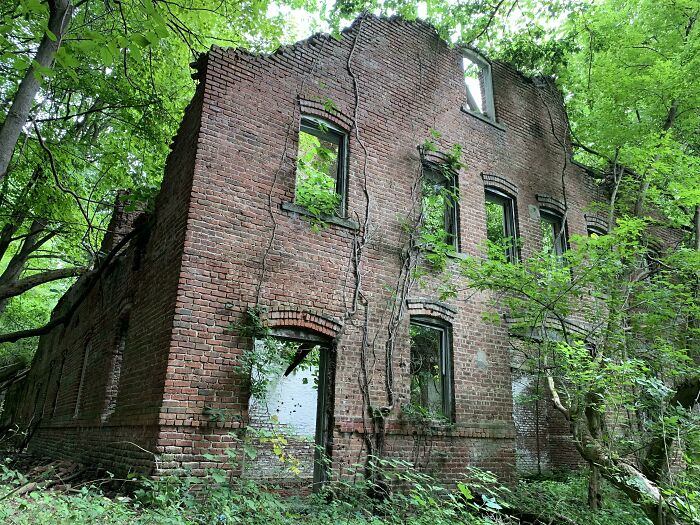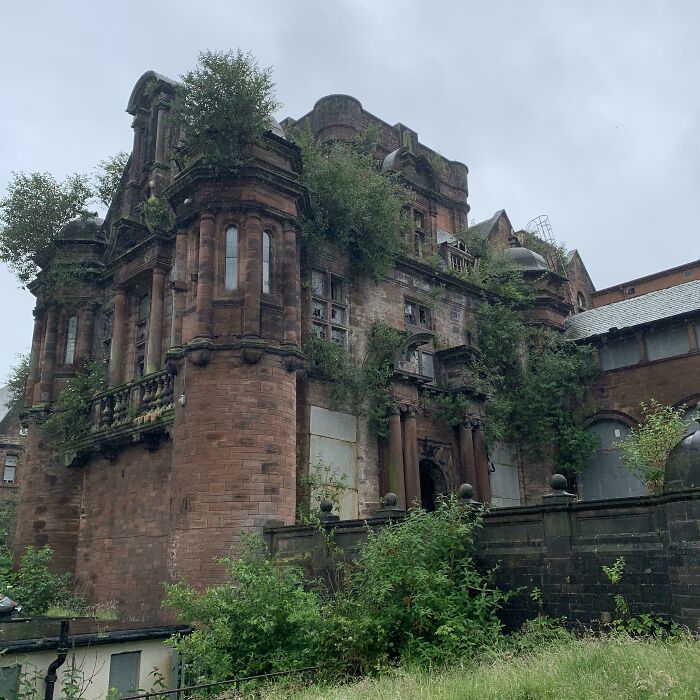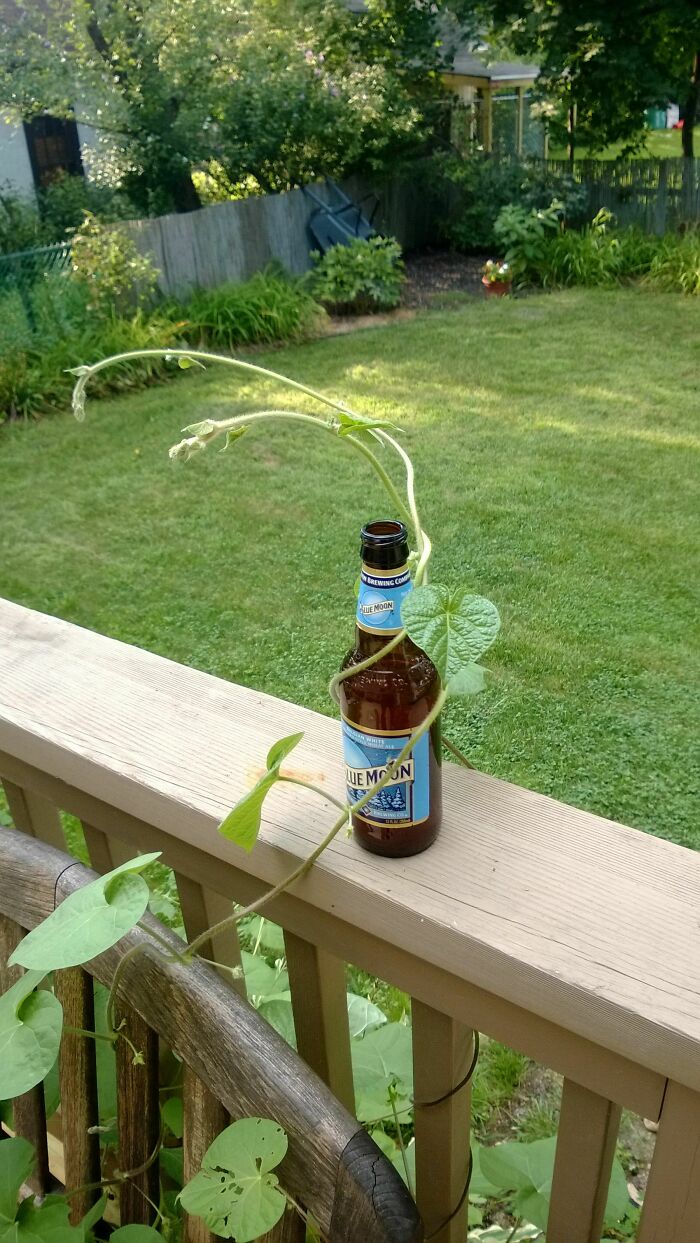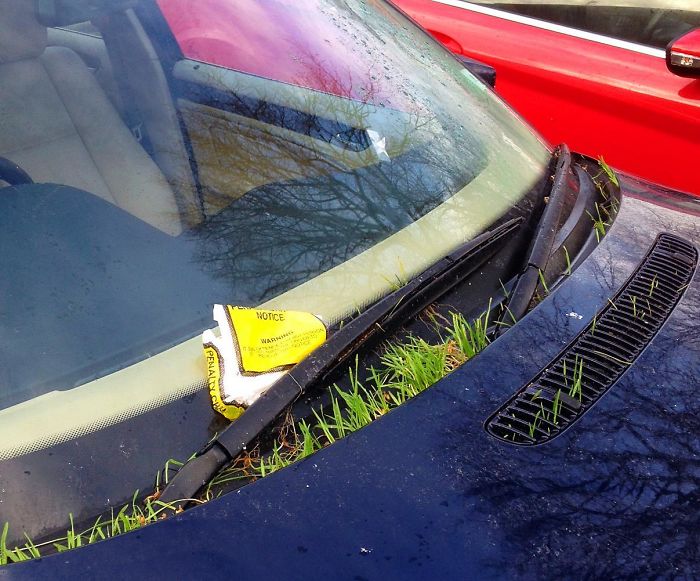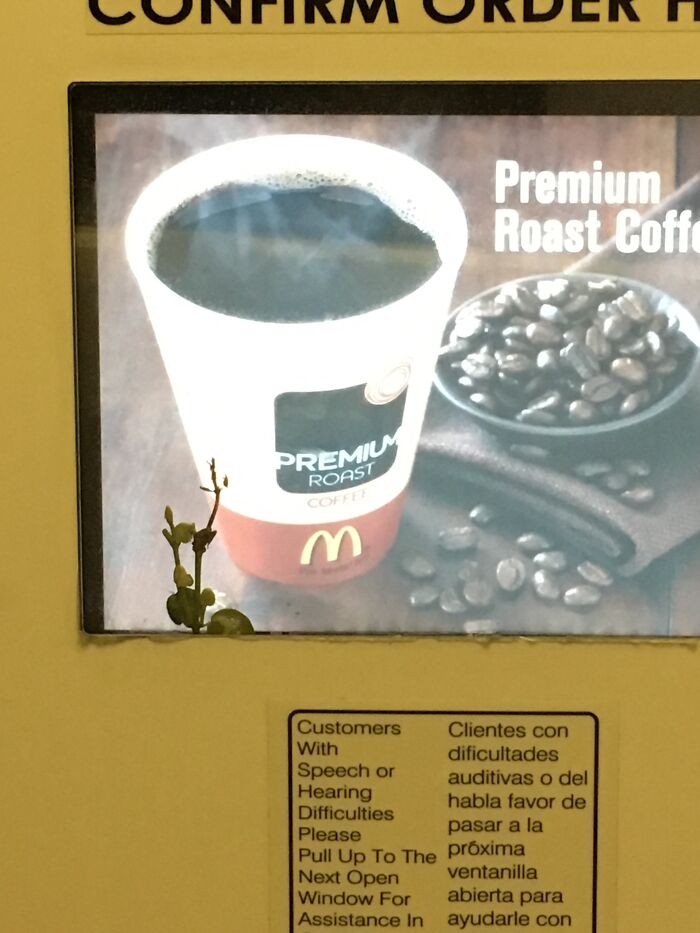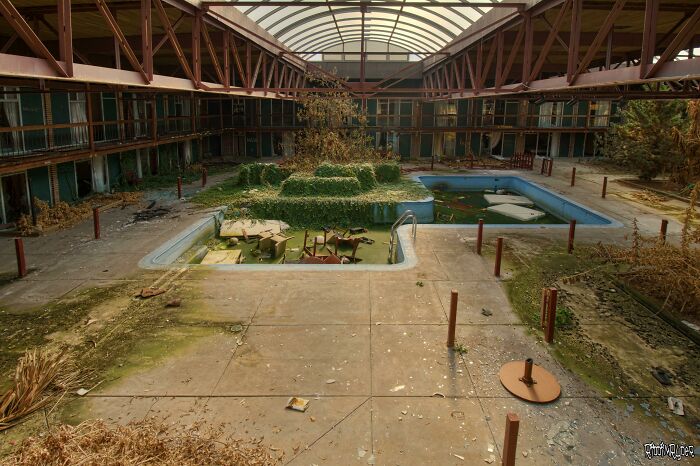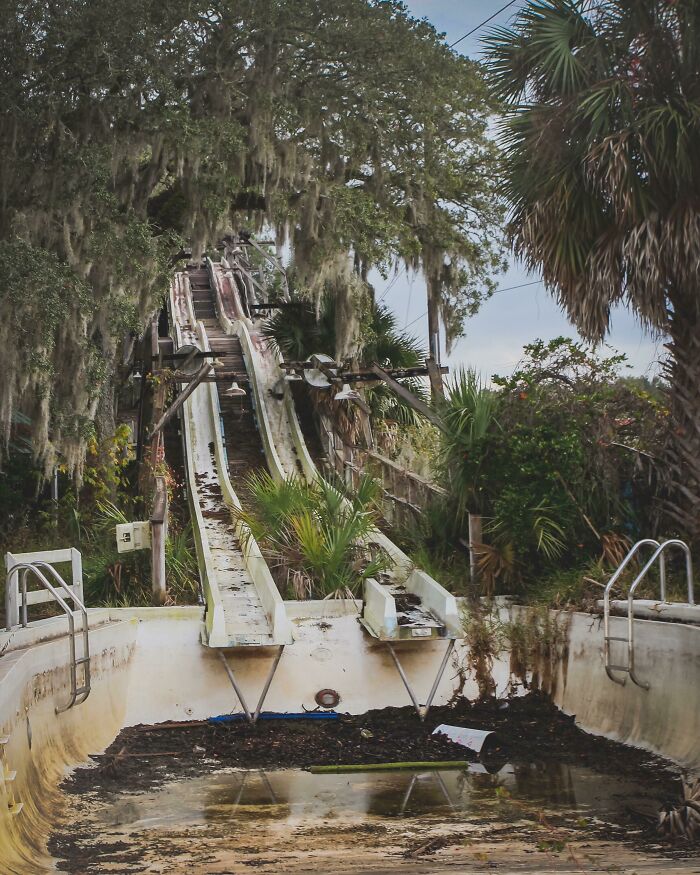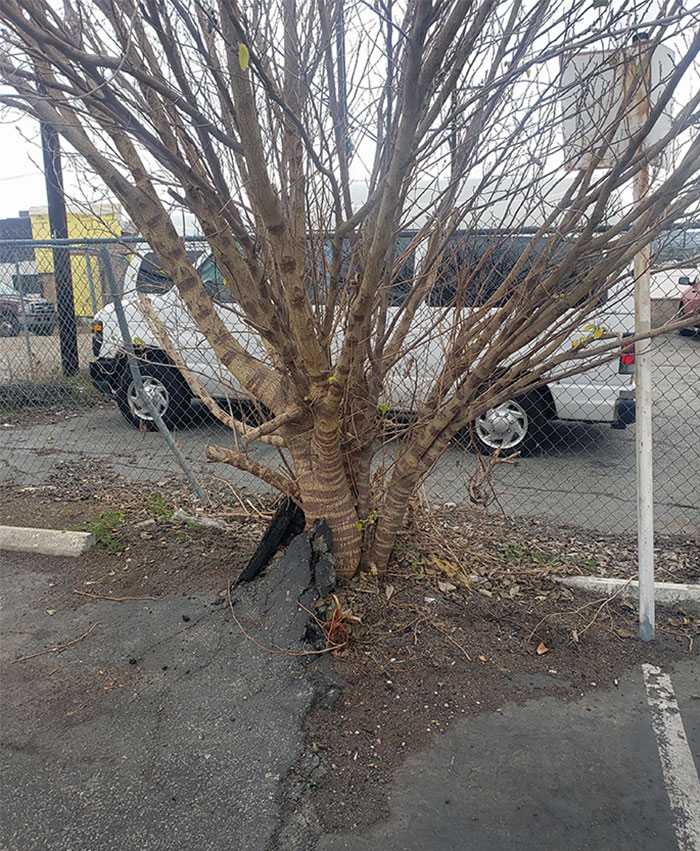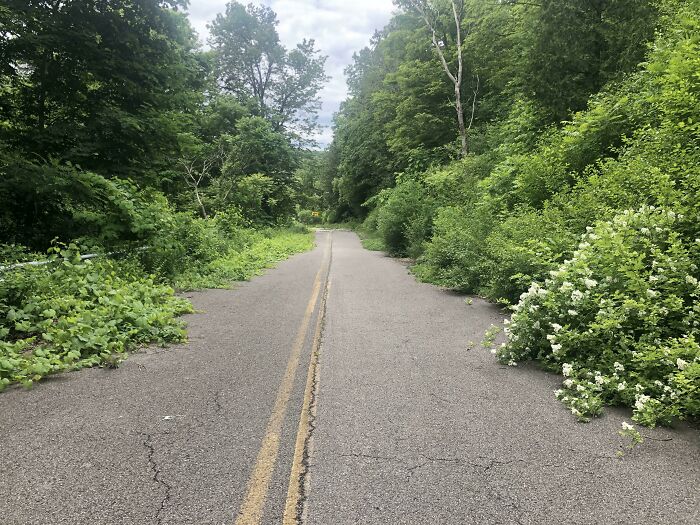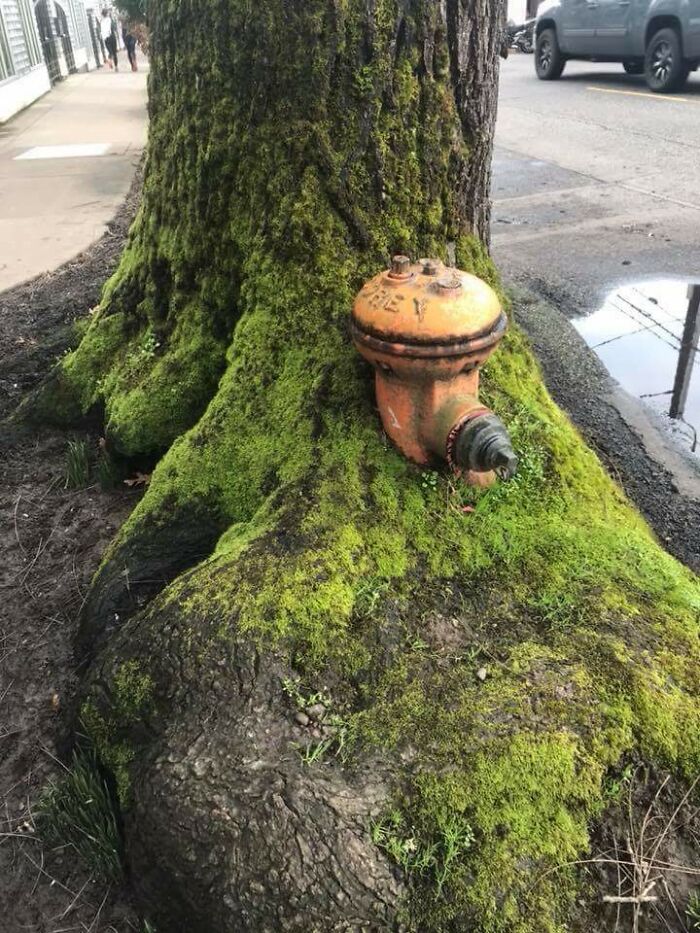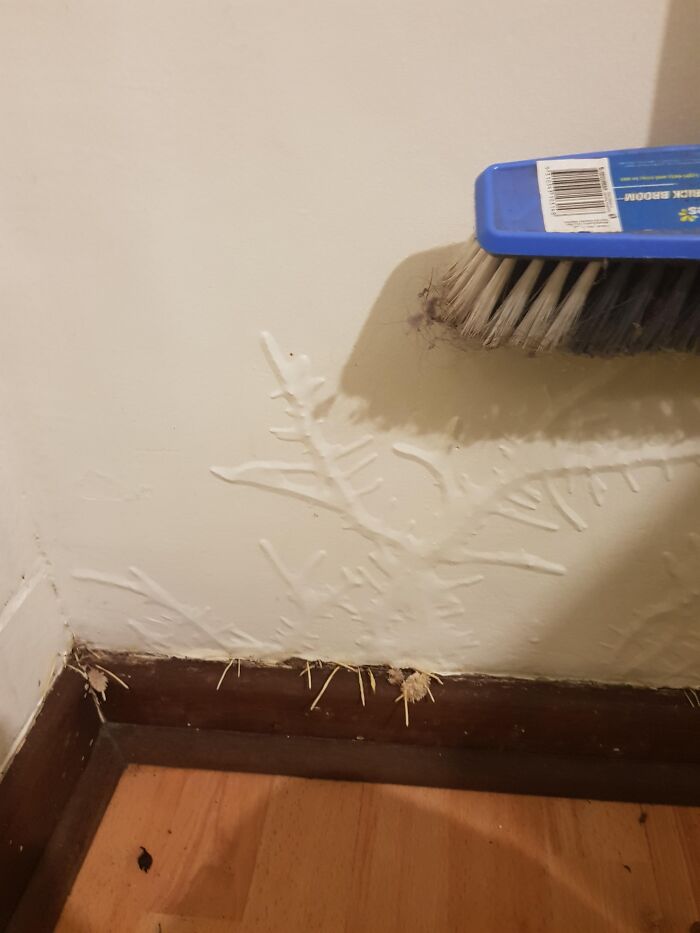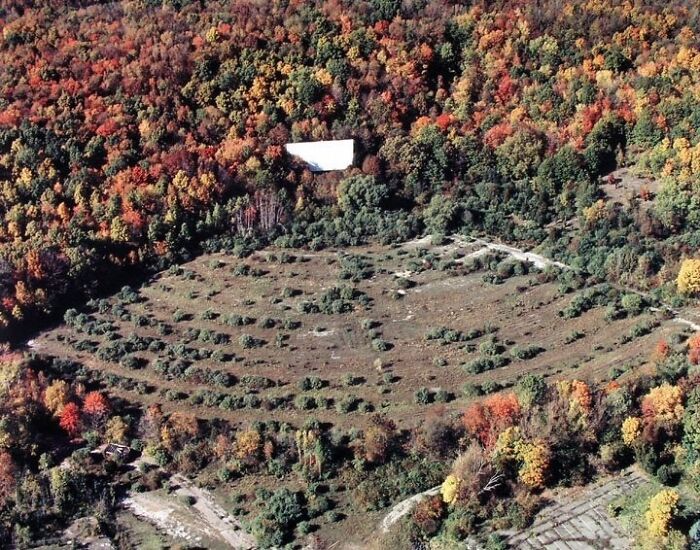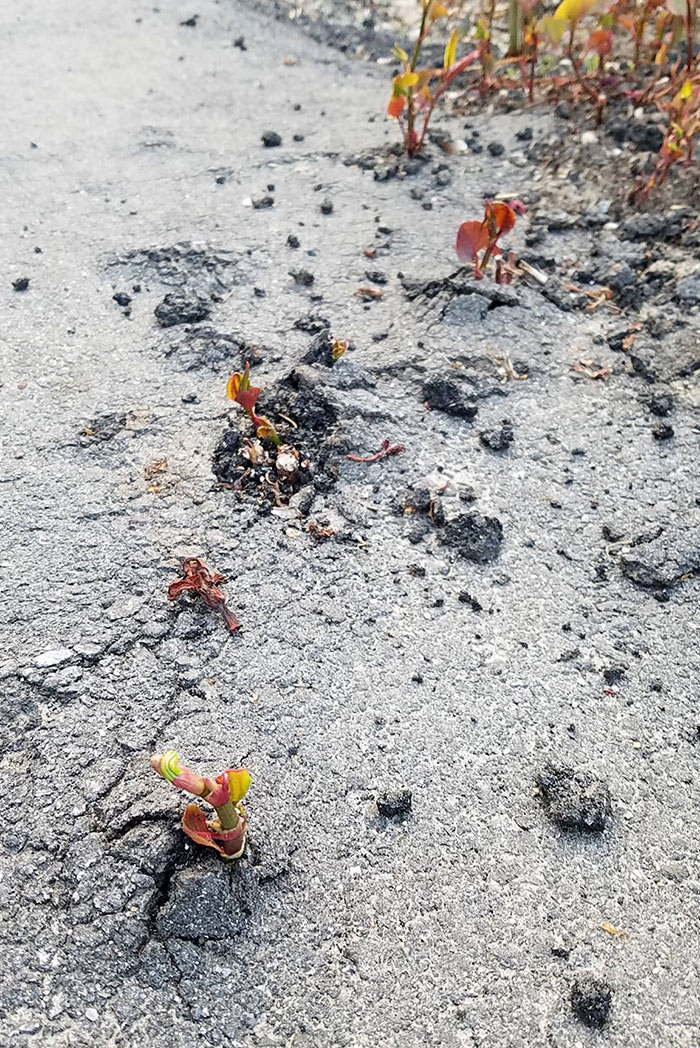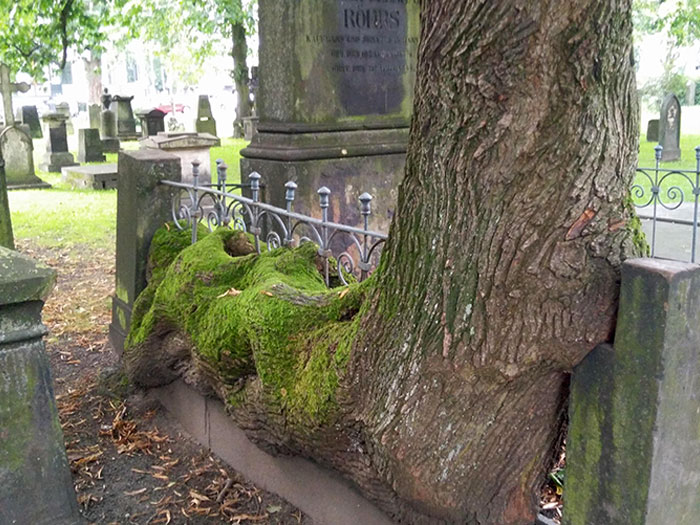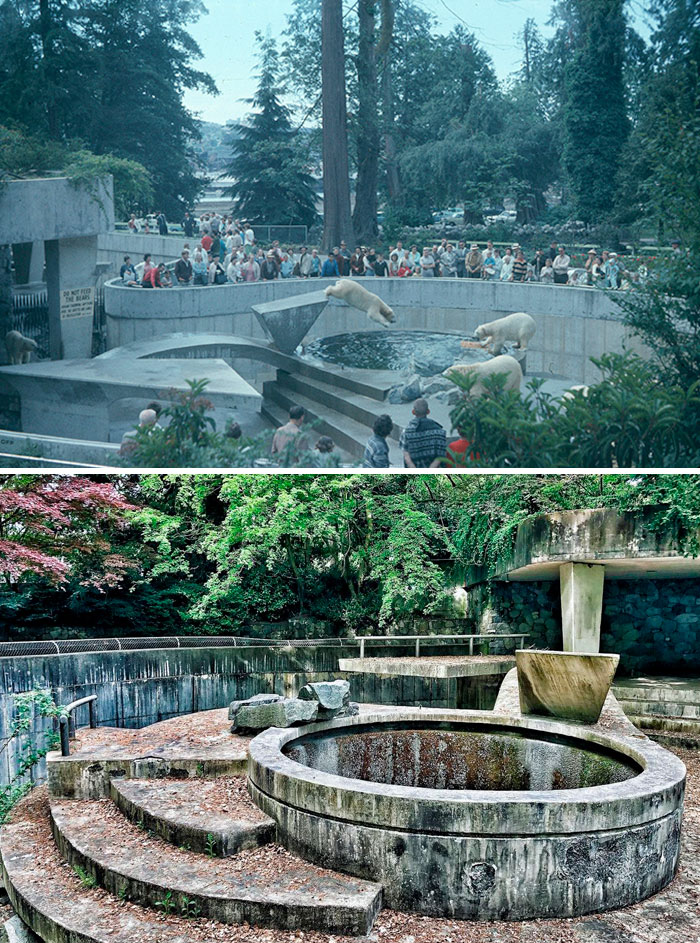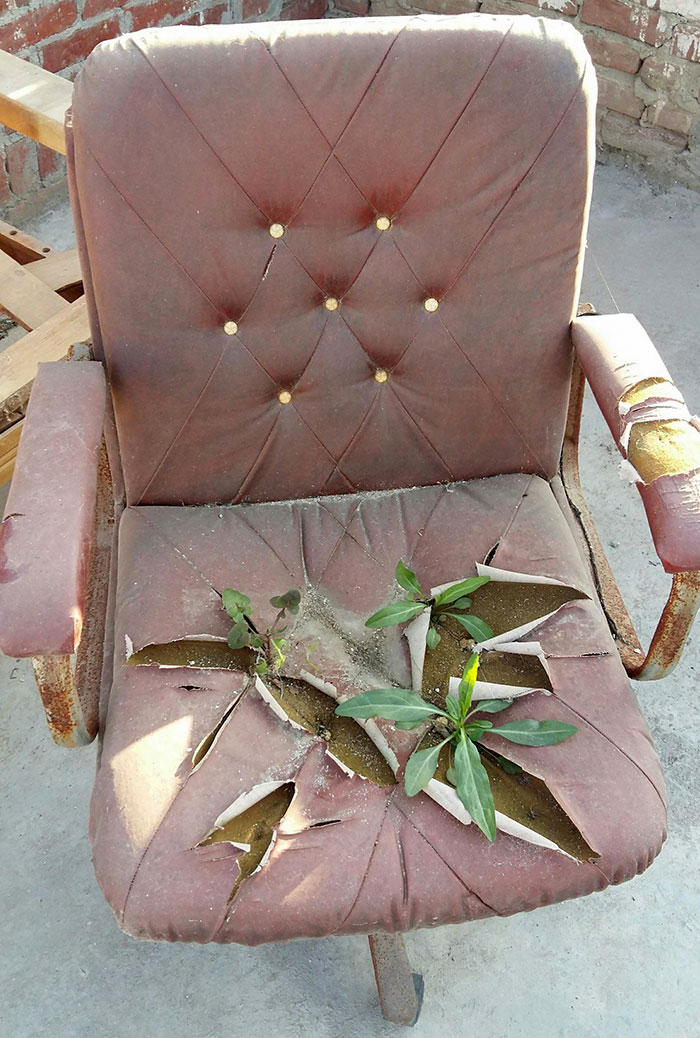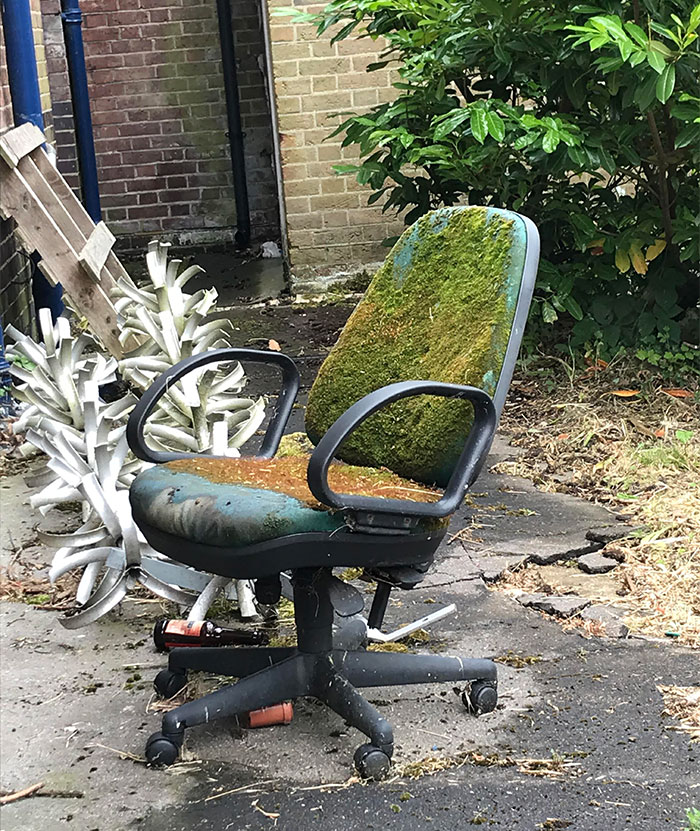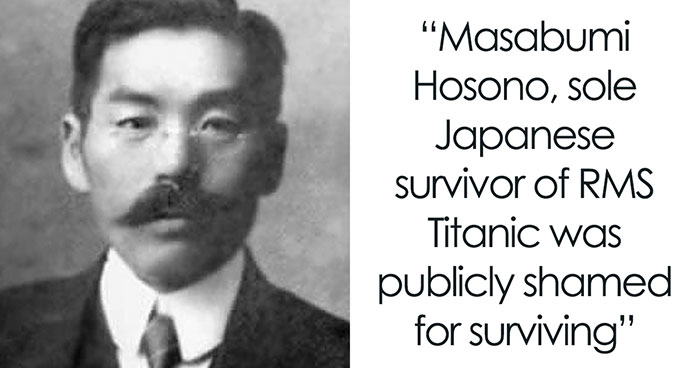We humans often build roads and bridges, canals and ports, even entire cities at the expense of the environment. But nature isn't planning on giving up. On the contrary, it is determined to persevere, showing just how fragile our creations are.
Maybe you remember our earlier list on Mother Nature reclaiming its territories, maybe not, but time passes and bricks continue to crumble, so Bored Panda decided to refresh your memory on the topic.
We put together a new batch of photos to show that nature is a force to be reckoned with and that ultimately, the world belongs to it. As much as we would like to think otherwise.
This post may include affiliate links.
Tree That Grew From The Inside Of An Abandoned Chimney
It looks like Rapunzel has already let down her hair
Load More Replies..."When I grow up, I will be tall enough to reach the branches that I need to reach to climb the trees you get to climb when you're grown up."
I would so try to renovate the inside of that, clean it up and build stuff inside. It would make an awesome house
A cool example of how nature takes back what rightfully belongs to it is Tikal, one of the most famous remnants of the Maya civilization. When author and journalist Alan Weisman hiked through the surrounding region, he discovered something fascinating on his way: "You're walking through this really dense rainforest, and you're walking over hills," Weisman told Live Science. "And the archaeologists are explaining to you that what you're really walking over are pyramids and cities that haven't been excavated."
We know about sites like Tikal because humans have gone to great efforts to dig up and restore their remains. Meanwhile, countless other ruins remain hidden, sealed beneath forest and dirt. "It's just amazingly thrilling how fast nature can bury us," Weisman said.
The Gate Keeper At The Abandoned Putzar Castle In Germany
This is pretty impressive however you look at it. That tunnel was built so well, it’s holding the weight of that enormous tree. Very cool
Yes! That's it. The weight of the tree like it's nothing. Well said.
Load More Replies...I was wondering that too. The roots must go off on the other side.
Load More Replies...Absolutely amazing!!!! (side note:my kitty is having contractions!! New kitties today!!)
Best of luck to you, your kitty and grandkitties!
Load More Replies...It's how well the arch was built that has made it possible for the tree to grow this way.
Found This Beautiful Tree Growing Inside An Abandoned Silo While I Was Exploring
It's honestly impressive to amass almost 300 downvotes in less than 15 hours.
This is amazing! And a lovely metaphor as well. Good on ya, Tree!
This scene from Guatemala's rainforest allows us a glimpse of what our planet could look like if humans were no more. Lately, have been getting snippets of this idea, as the global COVID-19 pandemic has kept people inside, encouraging animals to return to our quieter urban environments. Weisman, who wrote The World Without Us, spent several years interviewing experts and systematically developing scenarios that would unfold in our planet if we disappeared.
This Chinese Fishing Village Was Abandon In The 1990s. Nature Has All But Reclaimed It (Houtouwan, China)
Looks like the North side of every subdivision house in Georgia (America).
Old Shiva Temple Firmly Embraced By The Sacred Bodhi Tree In Bangladesh
No. Mother nature cracks the building like a nut.
Load More Replies...The tree looks like it had been 'poured' over the temple, beautiful!
In his research, Weisman started by taking a look at cities, where some of the most dramatic and immediate changes would occur, thanks to a sudden lack of human maintenance. Without people to run pumps that divert rainfall and rising groundwater, the subways of huge sprawling cities like London and New York would flood within hours of our disappearance. "[Engineers] have told me that it would take about 36 hours for the subways to flood completely," he said.
This Tree Grew Inside The Stop Sign
I was going for "desperate", but impressive works, too
Load More Replies...Railroad Tracks In The Forest (Taiwan)
Me too! But you probably shouldn’t walk directly on them, they look like they’d snap.
Load More Replies...This was my favorite "Abandoned places" pic and it is now my favorite one here as well!!Magical!
The angle of this photo and the plants captured, this is beautiful.
Built by Japanese during the 50 year occupation prior to 1945 cession back to China.
Without human oversight, glitches in oil refineries and nuclear plants would go unchecked, likely resulting in massive fires, nuclear explosions, and devastating nuclear fallout. "There's going to be a gush of radiation if suddenly we disappear. And that's a real wildcard, it's almost impossible to predict what that's going to do," Weisman explained.
In the wake of our demise, we would also leave behind mountains of waste — much of it plastic, which would likely persist for thousands of years, with huge effects on wildlife.
This Vine Climbed Up A Chair To Silence My Wind Chime
You could have stopped at "Wind chimes are evil." *growls at the whole concept of wind chimes*
Load More Replies...Boat Wreck Reclaimed By Nature And Turned Into An Island
Sure! You could buy those! Sail it to wherever you want, drop anchor, and wait. They were called "Instant Islands," just add water!
Persistent organic pollutants (POPs) — human-made chemicals such as PCBs that currently can’t be broken down in nature — would also leave a mark. "Some of these POPs may be around until the end of time on Earth. In time, however, they will be safely buried away." The combined rapid and slow release of all the polluting waste we leave behind would undoubtedly have damaging effects on surrounding habitats and wildlife, however, that doesn't necessarily mean total destruction: one quick look at the rebounding of wildlife at the site of the Chernobyl nuclear disaster shows that nature can be resilient on short timescales, even under such extremes.
Meanwhile, petroleum waste that spills or seeps into the ground at industrial sites and factories would be broken down and reused by microbes and plants in just a few decades.
Abandoned Synagogue
This is the Great Synagogue of Constanța in Romania. The Romanian Govt is debating whether to restore it or let it fall apart further.
I hope they sustain it in some way as it's a testament to those who were lost during the Holocaust.
Load More Replies...Abandoned Castle In Ireland
so much effort must have been made to build a castle on a what seemed to be a little island, only to be abandoned much later...
When they built it you could actually go there on a road/bridge. But then lake levels started to rise. :(
Load More Replies...If I ever own That much money ill buy myself an abandoned castle on a Island and live with my Cats, doggo and birds. What an amazing Fantasy
It is strange how we make some castles into tourist attractions but not others. Think of the history in all those abandoned castles. Amazing!
That's what makes these hidden gems all the more precious. The United Kingdom has so many fantastic ruin off the beaten path. Sometimes, I am thankful that they are more difficult to access so they are not made into tourists attractions that get crowded and require entrance fees. There are hidden, breathtaking locations that we still want to preserve.
Load More Replies...MacDermott's Castle is built on Castle Island in an inland lake, Lough Key, in County Roscommon, Ireland.
Real Grass Growing Through The Fake Grass
"You asked yourselves if you could, but never if you should"
Load More Replies...Please don't use fake grass. It's not as beautiful as the real stuff.
In Phoenix, many people put fake grass, because the ground is just too rocky to hold much else. Not many people I know about like walking on cacti.
Load More Replies...In our area, that's called crabgrass; officially, it's Digitaria. It's considered a weed and a 'lawn pest'. Soil and natural particles are in the air, and pets or wild animals will brings seeds etc. to the surface of artificial lawns resulting in these types of growths. I have artificial lawn at home and I get moss on them from soil runoff.
Why would anyone want artificial lawn? I mean, if t's too dry for real grass, there's always stuff like succulents or desert-plants to put out, but if not you can still go for wildflowers or bushes that don't require much tending. Artificial lawn is just bullshit in triple. 1) it looks dumb, 2) it's not good for anything living on your property (birds, insects etc) and 3) it's bad for the environment because it's basically plastic.
Load More Replies...my university set up plastic mats and outdoor seating for students to study outside for social distancing during covid and it has been so long, the mats all have tufts of grass, moss, and wildflowers growing through them like this
Nature will win in the end (no matter what we try to kill it with...)
Yes, Sam.... but it means that if nature will win, we would certainly die. If nature is to win, we have to die, because that's the only way for nature to win.; human race never learns to co-exist ..... in peace.
Load More Replies...With all that polluting legacy unfolding, water running underground in cities would corrode the metal structures that hold up the streets above subterranean transport systems, and whole avenues would collapse, transforming suddenly into mid-city rivers, Weisman said.
Over successive winters, without our regular de-icing, pavements would crack and provide new niches for seeds to take root — carried on the wind and excreted by overflying birds — and develop into trees that continue the gradual dismemberment of pavements and roads. The same would happen to bridges. Add some general degradation and these structures could collapse within a few hundred years.
A Friend Found This Out Hiking And Posted It On FB, Thought It Was Pretty Cool
I'm assuming the fabric and padding created a moist coarse surface for the moss to exploit.
It's a sad reflection on our society that even muppets can be murdered and dumped in the woods. Netflix docuseries coming soon
You can see the way Kermit looks at Cookie Monster. The admiration in his eyes is pure. Now, little Kermie T. Muenster-Fruegen will grow up in a loving household. As you can see in the photo above, lil Kermie has gone out to play about the leaves. Kermie=Kerm(it)(Cook)ie T standing for The, of course! Muenster=Monster, Fruegen=Frog. . en
Load More Replies...The Roots Grow According To The Pavement Pattern
cool! because that's where the growth had access to the soil (and still does).
This just creeps me out. Horrible looks like snakes, coming to get me
But I loves snakes Samantha. And they are so important to keep rodent populations down, and.....
Load More Replies...An Agave Growing Massive In This Long-Abandoned Greenhouse
reminds me of the sheep that was lost in the woods and had massively overgrown coat!
Found A Tree Growing Through A Stone Wall
Tree: "I'll just squeeze through here..." * inhales, tucks branches in*
Houseplants: "You did not water me at 3:58 pm exactly so now I must die!" Wild plants and trees: "Yes, I guess I can just about squeeze through a gap in the wall and ... thrive! Yay!"
Looks like the tree was just sitting on the wall, taking a break, when they finished building it.
With all this fresh new habitat opening up, nature would march in, pasting over the formerly concrete jungle with grasslands, shrubbery, and dense stands of trees. Weisman said that would cause the accumulation of dry organic material, such as leaves and twigs. "Fires are going to create a lot of charred material that will fall to the street, which is going to be terrific for nurturing biological life. The streets will convert to little grasslands and forests growing up within 500 years," he said.
Tree Growing Around A Hiking Sign
or.... was it a situation where the flattened scar (or an inner burl) in the tree was flat enough for someone to paint this on/in it? hmmmmmmmm
Yeah this tree seems too old to have grown around that sign.
Load More Replies...The sign is in red... what if it's covered up the word "no"?
I wonder how long it took to get to this point and how much time that little guy has left.
130,000-Year-Old Neanderthal Skull Encased In Stalagmites, Found In A Sinkhole In A Cave In Italy
Can you imagine being the first person to see that, looming out at you from the dark? *shudder
Agreed! Whoever found it is probably still screaming.
Load More Replies...I know it's obvious but, that used to be someone a very long time ago. I just find that very cool!
I wonder if he / she is looking down on this right now going "hey! that's meee!"
Abandoned Bridge In New Zealand
I like the thought behind this. People obviously needed to cross at this place urgently enough to build a bridge. And then they didn't.
It was completed in 1917 and closed in 1969 when a larger bridge was built nearby.
Load More Replies...I live in New Zealand and have never seen or heard of this bridge...now I know! A must see
Load More Replies...This is really cool! The suspension cables have snapped... bridge bed (whatever is left of it) probably gone into the river or whatever below?
This Tree Has Grown Round The Railing
Well, it does say "round the railing", so I think the leaves on the ground is the tree. Not much of a post though, it would have been cooler if there was like a tree "eating" the railing.
Load More Replies...Person 1* "Let's paint the railing!" Person 2* "Ermmmm... Nahhhhh......"
According to Weisman, buildings would degrade from hundreds of years of damage from erosion and fire. The first to topple would be modern glass and metal structures that would shatter and rust.
On the other hand, "buildings that will last the longest are the ones made out of the Earth itself" — like stone structures, Weisman added. But even those would ultimately become a softened version of themselves: the defined, iconic skylines we know so well today would disappear.
Ghostly Overgrown Villa In Germany
It's sad, that most of these places are in Germany, or somewhere in that area.
Whenever I see homes like this, I always try to picture them at a time when they were alive and happy, with a family living in them. Unless they were always an awful place with awful things happening in it, I hate to see them abandoned, neglected, and dying an agonizingly slow death.
wow this is beautiful I would live here it just needs some love and wash the graffiti
Old Abandoned Tracks
Yes it is, and very lush-looking too. Still would not even consider wandering into that tunnel, though. Nuh-uh. Now way. NopeNopeNope.
Load More Replies...This Oak Tree Growing Through A Railing
Check the leaf shape, it's definitely a Quercus. Probably sp. agrifolia, which is a California native tree.
Load More Replies...It’s pretty. But, I’ve lived around Oaks my whole life. Never saw 1 like this. I don’t think tney got that part right
That’s just so trippy!! It couldn’t take too long as that fence can’t be tooo old....
Earth might eventually become lusher and more diverse — but we should also address climate change, arguably humanity's most indelible impact on the planet. Weisman said that making useful predictions about what will unfold can be tricky. For example, if there are explosions at industrial plants, or oil or gas wellheads that continue to burn long after we're all gone, huge amounts of heat-trapping carbon dioxide would continue to be discharged into the atmosphere.
But carbon dioxide doesn't stay suspended in the atmosphere forever: our oceans are essential to absorbing vast amounts of carbon dioxide from the air. Of course, there are still limits to how much of it the ocean can take up without its own waters acidifying to unhealthy levels — potentially to the detriment of thousands of marine species.
Becoming One With Nature
I swear, officer, the tree came out of nowhere and hit me.
Load More Replies...If you get it out of there, you could drive it away without a problem.
Load More Replies...For once I'll believe you; however you do seem to have some unpaid parking tickets, since hmmm roughly 20years? Mind to settle them now, with interest?
Load More Replies...Person 1: Let's build a tree house!" Person 2: "Nah, everybofy does that... Tree-car?" Person1: "Carry a car? Impossible." Person 2: *Plants 3 trees Person 1: "Welllllll okay then..."
Man was too lazy to get it out of the way, so the tree went for a ride!
Nature Wins Again. Found This While Hiking In Boothbay, Maine
It looks like the tree is about to chew up and swallow the tombstone of mister Alfred Caswell.
52 years, 9 months and 9 days. Never seen a more specific date on a grave.
At first I thought it said "52 years, 9 miliseconds" and was like weirdly specific but ok
Load More Replies...Alfred Caswell is being freed from the dead by nature. Me next, I want to live!
If you look at the gravestone, it appears old Alfred died on what is now Tax Day.
This Overgrown Boat We Saw. Nature Ship "Ms Heimliche Liebe"
No it's not. Heim = home (as in many city names); like it's opposite "unheimlich" = "uncanny". So "Homely love". Secret would be geheim. So yes this green roof is built on purpose.
Load More Replies...This Abandoned Greenhouse
Legend has it that if you visit this place at midnight on June 21st you will see the ghost of Mr Robert Lloyd proposing marriage to the ghost of Miss Violet Carstairs on her 21st birthday. Tragically, six weeks later they both died in a freak pruning accident
Actually it was a cover up. Miss Carstairs was discovered in a compromising situation with the estates gardener. Unfortunately Mr Lloyd was in possession of a pair of sharp pruning shears at the time. Murder suicide. The gardener was dismissed.He later found employment with the Chatterly family.
Load More Replies...i hope someday i live in a house that has such a magnificient greenhouse like this one, maybe just a little more well kept than this one...
It looks like Uncle Monty's reptile room in 'A Series of Unfortunate Events'
Ooo! I could just sit down in that chair and become one with all kinds of everything...
Beautiful, to restore it. but if so, the poor ghosts wouldn't know where to meet. Or yes? and go more frequently.
Taking a glimpse at this imagined future might inspire us to be more mindful of our actions. Weisman sees an inherent value to visualizing a world without us. That is why he decided to write his book in the first place. He explained that when he started out, he was conscious that many people avoid environmental stories because it makes them feel bad about contributing to the damage we're doing to the planet, and how in turn, that's hastening our own demise. "I found out a way to get rid of the fear factor was just to kill [humans] off first," he said.
This Plant Has Been Trying To Stealthily Steal My Broom For Months
Wouldn't it be great if this was the plant trying to help with yardwork!
Mossy Initiation Path In The Quinta Da Regaleira, Portugal
Honest question...What would have been the purpose for building this?
It was built by an excentric millionaire and this is part of a masonic initiation ritual. The visit is to die for - it is in Sintra, outside of Lisbon - a gorgeous mountain with Cinderella palaces - do not miss it if coming out to Portugal.
Load More Replies...These are two different things in the picture. On the left is the lake near the Moor Castle, and on the right it’s a staircase inside Quinta da Regaleira. Picture on the right is not of inside the picture on the left. Both in Sintra, Portugal though.
I see only one picture at the moment? Anyhow is the third time in about three months this building is on BP.
Load More Replies...They featured this on the show "Mysteries Of The Abandoned." It's really cool! Would love to see it in person someday.
Reminds me of the home of what's left of mankind in a book called the Ice Schooner.
Radioactive Cars From The Fukushima Disaster Slowly Being Eaten By Nature
Like Hiroshima and Nagasaki? It's been centuries before people could go back right? I don't think you know how radiation works. The half life of the longest lasting radioactive isotope at Fukushima is like 30 years, and that's near the reactor. Places like this should be safer way before centuries pass.
Load More Replies...That’s wild. Nature cleaning up another one of our messes... or, was this the disaster caused by the tsunami in 2011? Either way, nature is obviously much more powerful than us
Only covers, not cleans. Radioactive cars aren't going to be doing anything good.
Load More Replies...If there's any car enthusiast out there, there are very valuable cars there, I'm saying GTR's, and full Alpina E30's
My Mother would probably cry - She has an e39 and e30 and they are her babies
Load More Replies...Walter, the Fukishima nuclear disaster occurred in 2011 at the Daiichi Power Plant in Japan. It is considered one of the worst nuclear disasters in the world. The powerful waves from the Tsunami that occurred severely damaged the plant's backup generators and melted material fell to the bottom of containment vessels that bore holes in the bottoms of said vessels and exposed nuclear materials. This led to multiple explosions.
Load More Replies...The Chernobyl nuke plant accident was in 1986 and it's still not safe to go there. The #4 reactor is STILL burning deep down after 35 years! Both Hiroshima and Nagasaki are safe now because the bombs exploded above the cities, not on the ground. Still, it's all sucking stuff if you ask me...
House Abandoned And Retaken By The Desert In California
And given that you’re a 5-star rated 5-star rating system, that means something coming from you.
Load More Replies..."Yep, we had to abandon the old homestead. Satellite reception was crap"
Considering there are smaller satellite dishes on the roof, this is relatively recently abandoned—-years rather than decades—-which shows just how fast nature can reclaim.
Quasi-Legible Moss Growing In The Letters Of This Fallen Tombstone
reminds me of those stone monuments at zora's domain in breath of the wild
Seeing as that game sold 21.5 million copies, you are certainly not the only one. I play it as well.
Load More Replies...I can make out the name Jessie Svan. I will check if they are in the underworld.
A Piano Left To Nature
Highly doubt it, if it were moist enough to grow that amount of plants it’s likely that the strings are corroded and ruined. Not to mention the keys are warped, but it’s worth a try.
Load More Replies...A little sad, but beautiful. Like poetry. Someone played beautiful music on it once, and now nature plays her own music on it. Beauty begets Begets music begets music
Wow, that last sentence was a voice to chat disaster. It supposed to say; "beauty begets beauty"
Load More Replies...That’s a shame. Not the nature part, but the abandonment part. Especially of a musical instrument.
Of all the gin joints in all the towns in all the world she walks into mine... Play it Sam.
Fern Growing Under A Circular Roof Hole
Abandoned Roller Coaster Being Taken Over By Nature
So many buildings, castles, bridges, rollercoasters, cars and other things humans just turn their backs and walk away from and leave forever. Why?
People 1000's of years from now are really going to wonder what this was....
Nature Took Over. 1965 vs. 2012
https://www.dailymail.co.uk/news/article-2133149/Pictures-abandoned-Halcyon-Hall-Bennett-College-ready-demolished.html The story of this one.
Field probably doesn't belong to the same owner as the building's property. Notice the fence?
Load More Replies...Thank you Isabelle for your unfortunately unique comment. Lots of misplaced concerns and praiseworthiness here.
Load More Replies...Ivy Overtaking A Car
I was thinking that vine must grow quickly, then I realised the car was probably a Lada, so perhaps not so quick!
pretty sure this is kudzu. it's invasive and there's a picture on the internet of it swallowing a school bus which i have included 1gQMykSo79...0-jpeg.jpg 
I don't think it is. the leaves are smaller. But it might be a close relative - or maybe poison ivy? Not sure where this is, but it doesn't really look like Asia or North America, so I'd go with Fallopia baldschuanica
Load More Replies...Abandoned Place Reclaimed By Nature
I have seen buildings like this a lot, sometimes it's a restaurant and I always have the same question... where are the toilets?
I've reached the age when my first thought on entering ANY public building is "where are the toilets?"
Load More Replies...I like the title Abandoned Place because we don't know what it was used for.
MS World Discoverer Was A German Expedition Cruise Ship. It Hit A Uncharted Reef In The Sandfly Passage, Solomon Islands, 29 April, 2000
Now it’s on its way to becoming a new habitat—-as long as it isn’t leaking a bunch of toxic s**t into the water.
Abandoned Tank
That's odd, looks like it wasn't destroyed, just abandoned. It looks russian, and they used their tanks for a long time.
Dug in, hull down. Part of a defensive line, somewhere forgotten: Yugoslavia?
It's a Soviet IS-3 tank in the Kuril Islands, and was probably part of the force which expelled the Japanese from those islands in 1946.
Load More Replies...Yes the war is over and all of our men are he- wait, where's Jeremy *meanwhile Jeremy⬆️*
It kinda looks like Warpath from Transformers... https://tfwiki.net/wiki/Warpath_(G1)/toys#War_for_Cybertron:_Kingdom
Took My Dad To See If His First Car Was Still Where He Left It When Its Engine Seized - 40 Years Ago. It Was
i was wondering same thing. It could have towed or pushed out still.
Load More Replies...Your car's broken and you need a new one this way or another - I do get this part. But why ffs don't clean up after yourself and leave your garbage in the forest?! Unacceptable!
In his defense, he 'abandoned it' in the back yard of his parents home: https://www.reddit.com/r/pics/comments/2gdxna/took_my_dad_to_see_if_his_first_car_was_still/?sort=qa
Load More Replies..."Cheers" to your junk-man dad. What about for son to clean after his daddy?
Looks like another selfish ass down-voted Katinka's comment.
Load More Replies...A Tree Somehow Growing In A Mexico City's Pedestrian Bridge
Somehow? The railing accumulated dirt, then water from rain, then the wind sent a seed and the rest is nature <3
An actual live branch of a Willow could have been used. And they just let it go.
Load More Replies...This Blanket Has Been Sitting Since October. A Species Of Creeping Ivy Started Growing Through It, But Only Thriving Where The Black Bands Of Color Are
White reflects the sun and burns the underside of the plant, black absorbs it and keeps the underside warm and moist? Maybe?
White reflects light, black absorbs it. Wonder if that has something to do with it.
It looks more like the bands of darker colour where the most greenery is growing is a lace inset. If so it would simply be easier for it to grow there.
While My Sister Was On A Long Business Trip An Outdoor Plant Grew Indoors Through A Locked Window
Fun fact! Virginia creeper can cause a reaction that looks and feels like poison ivy to a small percentage of people. My husband and I couldn’t figure out why we both had such bad reactions after working in the yard and knew for a fact we hadn’t touched poison ivy. After a few years of annual steroid treatments following yard work - I researched (okay... I googled) different plants in the yard and we realized virginia creeper was to blame. Most people don’t have a reaction but… If you do, it’s very much like poison ivy! #GoodToKnow
i had this problem of poison ivy growing through my locked window im 12 and in virginia but yeah it was growing mores and more then we killed it but forgot to get rid of the part sticking out
That sounds bad. Many times people ask me to remove poison ivy that grew like this because I am unafffected. I do it, obviously.
Load More Replies...I would remove the bit of vine that's grown inside and encourage it to "frame" my windows...
(As a German) I ask myself, why air conditioners are used in American houses, when some windows are so permeable, that even plants can grow into the house through them.
I'd adopt it instantly. Instead, half of my plants died when I was away from my city flat for 2 months due to quarantine :-(
This Tree Swallowing A Trespassing Sign
It's doesn't want the humans to know. That sign has been keeping out victims... I mean humans for years
No, it's swallowed them too after swallowing the warning.
Load More Replies...oh wow, it grew under the paint so theres still some of the sign on the tree
Apartment Complex In Keelung, Taiwan Slowly Overtaken By Trees
Those look like apartments built for factory workers. When the factory closes, everyone loses their home
Tree That Grew Through And Around A Wagon Wheel
Wonderful that the wheel was just leant against the tree all those years ago, and no one bothered to move it.
This Gate Has Been Open For So Long That A Bush Has Grown Around It
Or when you're too lazy to uniquely rotate and position every plant in your adventure and just go alt alt alt alt alt alt alt alt alt alt alt alt alt alt alt alt alt alt alt alt alt alt alt alt alt alt alt alt alt alt alt alt alt alt.
Load More Replies...And the gardener has taken the time to trim it all this time, without moving it away!
That's the way all doors should be... open! oh, except for refrigerator doors...
Abandoned Paper Mill With Nature Starting To Take Over
The other natural things have come for the funeral of their beloved tree's murder.
I wish they did that with the paper plant in my hometown. Now it's half a million ugly condos!
Hotel In Southern Europe
"Little slow tonight isn't Lloyd?" *laughs* "Yes it is Mr. Torrence. What'll it be?"
Load More Replies...If I'm not completely blind, then the final score on the scoreboard is 50:0 in favor of nature ...
Waterway Underneath An Old Spanish Arms Factory Being Overtaken By Nature: Like A Scene From LoTR
If you wait till nightfall, in the moonlight, the Elven runes appear. Speak Friend and enter.
Reclamation In Overdrive, New Orleans
Jet Graveyard
I find it interesting that these "graveyards" even exist... I guess it's not worthwhile recycling the materials otherwise it would have been done already.
I know, but what else would be awesome, is if someone painted this.
Load More Replies...Looks it started as long term "storage", where the planes are being "cannibalized" to keep the rest operational.
This Abandoned Railroad In Hemlock Forest Taiwan
Old Hotel Room (Europe, 2012)
You can take this picture and put it in an art gallery and people will ponder it's meaning for hours
Fascinating that nothing appears to have been looted when the hotel closed and left everything there.
Spoiled, rotten hotel room... looks like the inspiration behind some of the scenery in The Last of Us...
I was going to say the same thing. it actually LOOKS like one of the hotels in The Last of Us!! It literally could have been lifted out of there. May need to go play that again!
Load More Replies...WW2 Bomber Being Swallowed Up By Jungle Undergrowth. Photos By Bruce Mcpherson
I AM AN ABSOLUTE FAN OF THESE PLANES IT LOOKS SO COOL AND ITS FIRE POWER IS INCREDIBLE
Cactus Growing Out Of A Water Pipe
This Ruined Church With A Tree Growing In The Middle
Nature is stronger than religion. Sorry if that offends anyone, but if they give it a good deep think, they’ll see what I mean.
If I were to rebuild that, I would leave the tree in as part of a courtyard, but I would have to tear down the ivy, too.
Or if you make sure the stone walls are stable you could leave it as is and have outdoor weddings, funerals and mass all in the majesty of mother nature
Load More Replies...Wouldn't say ruined, would say rather "currently occupied by nature".
Right? I think it's a *perfect* place to worship and meditate. Decorated by God Himself.
Load More Replies...A Tree Growing In An Abandoned Mansion
If someone were to rebuild that masion they need to leave that tree there. It looks amazing there.
Sometimes you see luxury houses built around centuries old trees, I love the concept!
Load More Replies...If the Earth is currently governed by a manner of animal-king, sentient cloud, or other governing body that either refuses to or is incapable of listening to reason, th- [RECORDING SHORTS OUT]
Pretty sure they planted that tree in there as a feature when they built the place
Abandoned And Overgrown College In Gali, Abkhazia
Georgia the country I believe if you were wondering what "Abkhazia" was
What a shame a center of learning should be allowed to crumble—-unless they taught some evil s**t there. If that’s the case, let it fall.
Abandoned Intersection Near Ottawa
>:0 i totally expect cult gatherings/demon summonings/a ghost hot spot to be here! so cool >:>
Abandoned Soviet Monument In Krasnodar, Russia
This, and what it symbolized, can rot for all I care. The old Soviet system was oppressive, repressive, soul-sucking, and dangerous for anyone who didn’t toe their very narrow line. Let it die out.
In a strange way... something that resembles something so wrong.... looks so beautiful.
How come the man gets to do the waving, whilst the woman has been doing all the hard work!
This House Belongs To The Trees Now
Like the other example in this article, I wonder what it was like when the house was still alive—-meaning when it had a family living there.
This Tree Grew Inside An Old Silo And Finally Made It To The Top
"When I grow up, I will be tall enough to reach the branches that I need to reach to climb the trees you get to climb when you're grown up." -Matilda the Musical
I swear I've read an article somewhere about people growing trees in structures like this deliberately
I drive past this silo quite often and it always makes me smile. This photo was taken in late fall or early winter because it is leafless. It is alive and well and leafs out every spring.
Mushrooms Growing Out Of A Scooter Seat
Abandoned Cars In The Ardennes
This is an abandoned car graveyard. It wasn't a road. It is thought that these were abandoned by American soldiers in Belgium after the war, but some locals say that it wasn't just soldiers. Some cars were abandoned after the war
I think I read about it a year or 2 ago. It used to get tourists from all over the world, but it's all been cleared away now.
Load More Replies...Nature Takes Everything Back Eventually
*insert joke of communal transport never being on time here*
*some sort of chiming sound* followed by: "Attention Passengers... Train 1234 to Somewhere has been delayed indefinitely. Thank you for using Absolute Rail and have a good life."
Load More Replies...Abandoned Poolhouse Overgrown By Plants
This Tree That Has Absorbed Its Bench Over The Years
My Great Aunts House Slowly Being Reclaimed By Nature Taken On My Trip To Mexico Last Year
Abandoned Cottage In England
Some nice collectibles to be had in there! That oil lamp would come up a treat with some TLC...
It's a wonder to me how people can just say "Right, we're out of here" and just leave everything.
Mother Nature Always Wins
Ok, now it's just being childish. It had a perfectly nice pot to grow in
I'm actually bit worried that this might be a crack to another dimension and the natives are not friendly...
Load More Replies...This Is Insane
These signs are made by adhering screen-printed sheeting to an aluminum substrate. The sheeting has peeled away from the aluminum and has stayed on top of the tree and stretched out while the aluminum was "absorbed" by the tree.
Load More Replies...This reminds me of those twisted "copied" animals in that movie "Annihilation"....where they would absorb parts of objects and other animals, so creepy.... *shudders*...
Just Some Grass Growing On A Lawnmower
This Weed Growing Inside My Patio Fell Over Then Continued Growing Upwards
Unabandoned Train Station
I think the UK government made a mistake closing minor railway routes in the UK... now they want to put in HS2: high speed rail network to connect northern urban centers with London. that will cost many billions of pounds and will destroy a multitude of both inhabited (by human beings) and natural areas.
With all the methods we have of conducting business this has never been less necessary. Just a pet project that they government doesn't want to let go. Creates temporary jobs and makes them look good(ish).
Load More Replies...Alcatraz Island
the bush in the top right killed a tulip sprout
Load More Replies...A Vine Grew Up My Basketball Hoop
Almost like the branches will play hoops with you—-and intercept your shot.
This Cool Gravestone That Nature's Reclaimed
Tree Growing Around A Letterbox
The Way How The Tree Roots Grow Follows The Gaps Between Bricks
The tree roots are beautiful; the title is bothering me more than it should
The New World Mall, In Bangkok, Was Closed In 1997 After It Was Found To Have Breached Building Regulations
The New World Mall is fast becoming a very Old World Mall. A Primeval World Mall.
The pool is open from 9 to 6 Daily. Bring your own tetanus shots please.
This is the same mall where fish now dwell. Locals added them to control mosquitoes.
Did those breached regulations have something to do with inadequate foundations for groundwater?
Might be that's what they breached with the building-regulations ;-)
Load More Replies...Due To The Quarantine, Nature Is Starting To Reclaim The Stairwells At The University Where I Work
I would let them flower and enjoy the blooms before severely pruning them back...
Low Mileage Driver
Sidewalk In São Paulo, Brazil, Completely Ruined By Roots That Grew Over Time
Abandoned Railroad Tracks In Forest
Abandoned Wagakawa Hydro Power Plant, Japan
Trees Growing Through This Car
That car was a beauty a long, long time ago... Car's ghost singing "A long, long time ago I can still remember how that music used to make me smile/And I knew if I had my chance/That I could make those people dance/And maybe they'd be happy for a while..." (Thank you Mr D. McLean for those poignant lyrics)
If it had been well looked after, this car would be worth a fortune today.
This Tree Growing Through A Fence
tree be like :Lemme just put one step that side ..no one will notice !
Builder: "This fence will be so strong NOTHING CAN GO THROUGH IT!" Person: "Really?"
Gates Only Unlock On One Side, Causing That Half The Path To Grow Wild
Cool, but why? What’s the point of a gate for a two-lane pathway that only locks on one side?
The Inside Of A Castle Near Where I Live, Ireland
Wonder about the family that lived there. Whatever happened to them, and when and why did they abandon their home?
I expect the British murdered them all and stole their land. .
Load More Replies...Looking for someone to trade a long holiday in the UK for one in the USA!! Boulder CO!!!!
Abandoned Altar In The Woods
* insert ritualistic music here* (Ameno could work for this)
Load More Replies...All hail jeb, and your sheep shall provide rainbow wool for eternity. (Minecraft)
This Car Was Left On My Grandparents’ Property When They Bought It
My best guess is that they bought it back in the forties or fifties, maybe? Early sixties at the latest?
I think that meant they bought the property, because it would not make much sense to buy an overgrown car
Load More Replies...Looks like Bonnie and Clyde's last car before they were shot out!!!
Abandoned Hospital In Khovrino, Moscow
This Tree That Grew Over A Parking Sign Over The Years
Some trees like Sycamores- which I think this may be- grow very quickly...
Stumbled Upon This While Surveying In Upstate New York
Wonder what kind of building it was, back when it was still alive, and if good or bad things happened there.
The Royal Alexandra Nursing Home In Paisley, Scotland
I had some weeds/miniature trees removed that had taken root in the shared gutter between mine and my neighbour's property... it doesn't take long!
Nursing home - lots of elderly people dying in there. Could it be haunted! ?
A Vine Grew Around This Beer Bottle Left Out Overnight After A Party
This Car Has Grass Growing Through The Hood
There's A Plant Growing Inside The McDonald's Drive Through Order Screen
Pool Being Swallowed By Ivy Inside The Abandoned Days Inn Hotel In PA
If you see the furniture in the pool it likely means that it was a hurricane flood or some other disaster. my grand parents live in Florida and every hurricane the throw the chairs in the pool.
Load More Replies...Abandoned Water Park In Florida
Think we'll be seeing more abandoned amusement facilities as a result of the COVID-19 as travel/leisure businesses go bust.
People: "Ahhh! Covid! Better go!" Nature: Wheee! Yahoo! Much better!"
RIVER COUNTRY!!! It was a blast until the brain-eating amoeba killed a kid!
The Way This Weed Grew In The Past 2 Years. Walked By It Every Morning Since It Was A Baby Weed. This Goes To Show You, The Power Of Nature In A Small Sense
Then we should clear the paths for these arboreal giants whose ancestors were there before the sidewalks.
Weeds Were Growing Out Of My Dad's Car
I Found A Road Being Reclaimed By Nature
A Fascinating Look At How This Tree Grew Around An Old Fire Hydrant
Was wondering if someone would add ythis photo taken down the street from where i used to live in portland oregon.
Load More Replies...Photo I Took Of The Water Slides
Too bad. These look like they were a lot of fun to slide down.
the one in the middle looks the safest but I want to go down all of them
Good luck. Looks like gators roam them waters now
Load More Replies...Abandoned President Heads
I think it's the collar and tie. Modern dress looks so weird in statues
Load More Replies...I could think of a different, more recent president that I'd build a statute to just to behead
Something Started Growing Under Our Wall
OH HELL NO all the others were pretty and cool but this freaks me out for some reason.
Abandoned Drive-In Theatre
I went to a Drive-In a few times as a teenager... Home video killed them and small independent cinemas. Now with the effect of COVID-19, even large cinema conglomerates are at risk of closure.
Drive ins here are growing in popularity since COVID. Though, they don’t make them like they used to. All of the screens are inflatable
Load More Replies...These should be reclaimed and come back, in light of the pandemic and social distancing. The cool thing about drive-ins is you can take the kids—-and even yourselves—-in pajamas, especially if you bring your own food and don’t need to get out of the car. Everyone can be as comfortable as they are at home, and the kids can fall asleep in the back seat.
Invasive Plant Growing Up Through My Driveway
Japanese knot weed? hat stuff tanks property values cause it is almost impossible to kill and destroys paving and foundations
Maybe someone should find a solution to eradicate the weed and invent something better to underlay the paving/line the foundations... MIT (other universities are available) post-grad challenge?
Load More Replies...The only way to get rid of it now is to dig it up, likely with a tractor, to pull out the roots which spread.
This Tree That Grew Through A Fence
Abandoned Polar Bear Enclosure. Vancouver, BC
Good. Polar bears and all other wild animals should be left in the wild—-left alone there. Any that are rescued and can’t be released back should live in sanctuaries specifically designed for them to live as wild as possible, yet still be kept safe, secure, well cared for, appreciated, protected, and most of all loved.
I’m glad it’s abandoned, that’s a very small enclosure for what looks like 5 polar bears
Years ago (and still today I expect, unfortunately), enclosures were purposely small so that the animals couldn't hide away, so people could see them well and "get their money's worth" !! :(
Abandoned Ford Bronco In The Woods
I disagree. It will be completely "All terrain" in a few more years.
Load More Replies...Abandoned Machinery, Romania
At the rate things are being built around here, this might as well be a normal construction
It looks like the top half of a machine/human crawling out of the earth. The part on the left is his arm and shoulder and his head is about to raise up and out.
There was a property like this in my village- lots of derelict machinery covered by an assortment of vines. They finally cleaned it all up only to build more houses... shame, I would have preferred some usable green space.
Plants Growing On My Old Chair
And than there are people, planting expensive plants, mulching, composting, weeding, watering and the plant dies.
This Abandoned Shoe I Found Deep In The Forest
There Is A Chair Near My Local Train Station Which Is So Old That There Is Moss Growing On It
Wholesome post. Sigh......now I want to travel everywhere to see these with my own eyes !
Me too! (as long as i dont have to go into that creepy tricell hospital.
Load More Replies...Best evidence that climate change isn't going to kill the planet. It might kill us, but the planet will survive
A lot of these could have been stills from "Life After People."
Load More Replies...Wow..... these abandoned places are stunning!!!! I really badly want to go explore them with someone.
How do people find these places? I never find cool abandoned places.
So many hilarious comments. Yes, nature - vegetation tries to survive - that's one thing deserving admiration. But try to imagine if nature was left untouched, free from any kinds of man made debris, or any kinds of imaginable and unimaginable wrecked objects; NO any once beautiful architectural creation laying in ruins - I don't mean the remains of millennia old structures but relatively recent buildings - I love architecture, seeing it dilapidated is disheartening to me. Now imagine, if you can, all the junk was gone, the abandoned buildings were either demolished, reused if possible, or renovated. What if human species stop laying waste in nature, reclaimed the cities instead, stop urban sprawl and devastation? Wouldn't that be really something worth admiring??? The earth would undoubtedly love it too.
Wholesome post. Sigh......now I want to travel everywhere to see these with my own eyes !
Me too! (as long as i dont have to go into that creepy tricell hospital.
Load More Replies...Best evidence that climate change isn't going to kill the planet. It might kill us, but the planet will survive
A lot of these could have been stills from "Life After People."
Load More Replies...Wow..... these abandoned places are stunning!!!! I really badly want to go explore them with someone.
How do people find these places? I never find cool abandoned places.
So many hilarious comments. Yes, nature - vegetation tries to survive - that's one thing deserving admiration. But try to imagine if nature was left untouched, free from any kinds of man made debris, or any kinds of imaginable and unimaginable wrecked objects; NO any once beautiful architectural creation laying in ruins - I don't mean the remains of millennia old structures but relatively recent buildings - I love architecture, seeing it dilapidated is disheartening to me. Now imagine, if you can, all the junk was gone, the abandoned buildings were either demolished, reused if possible, or renovated. What if human species stop laying waste in nature, reclaimed the cities instead, stop urban sprawl and devastation? Wouldn't that be really something worth admiring??? The earth would undoubtedly love it too.

 Dark Mode
Dark Mode 

 No fees, cancel anytime
No fees, cancel anytime 






